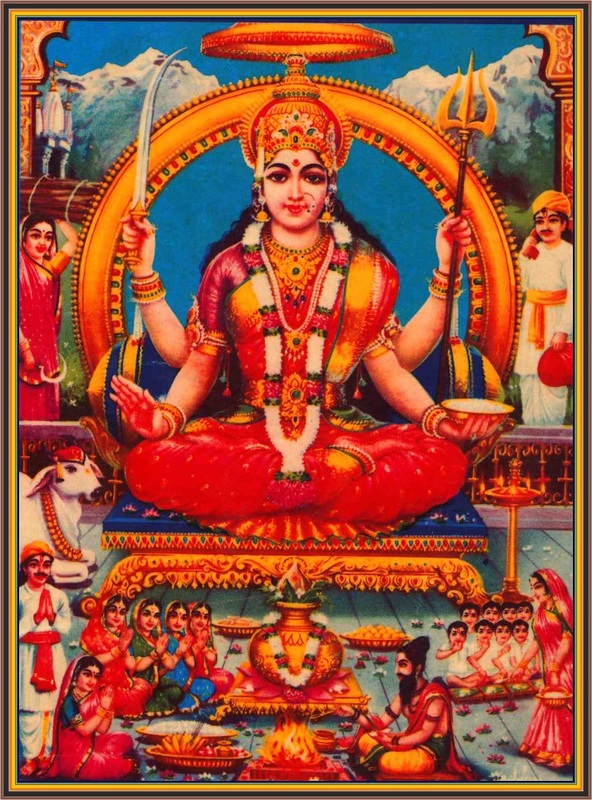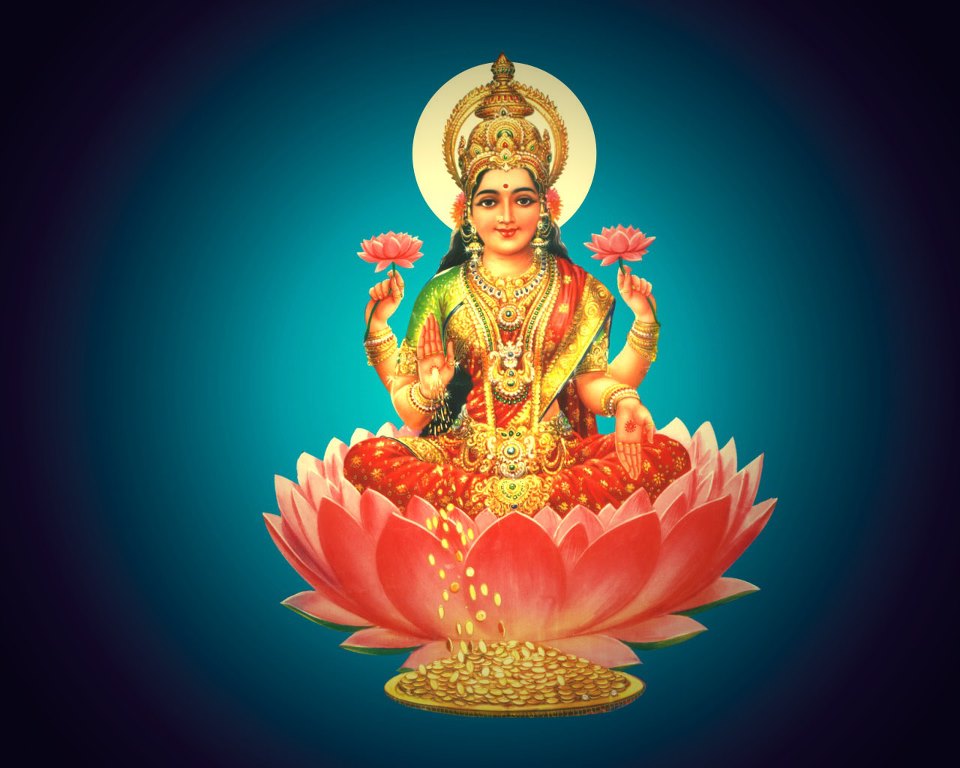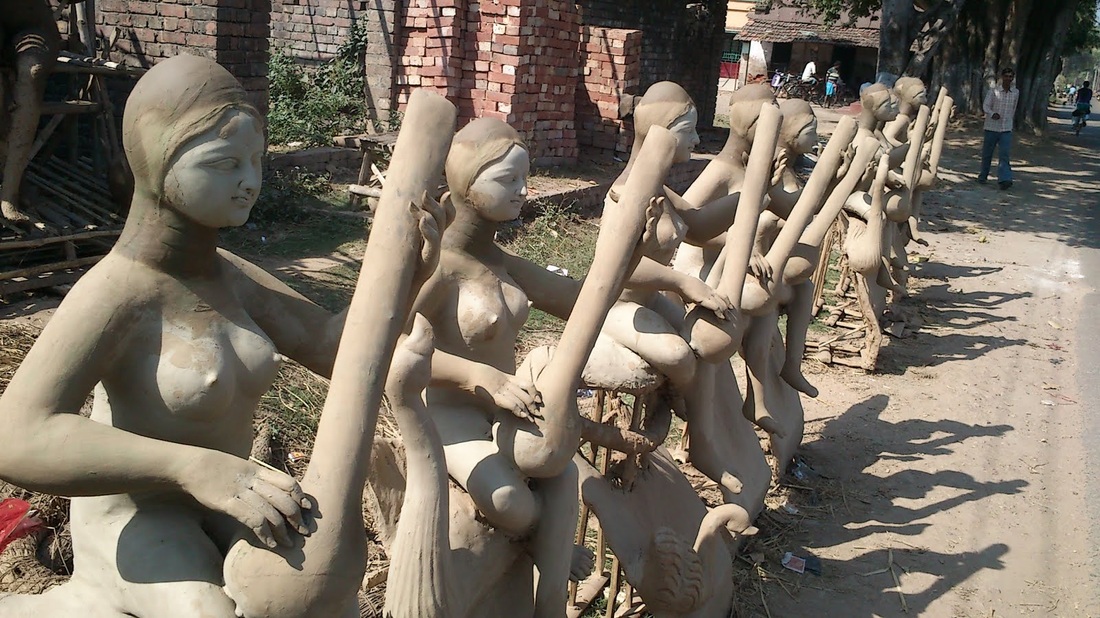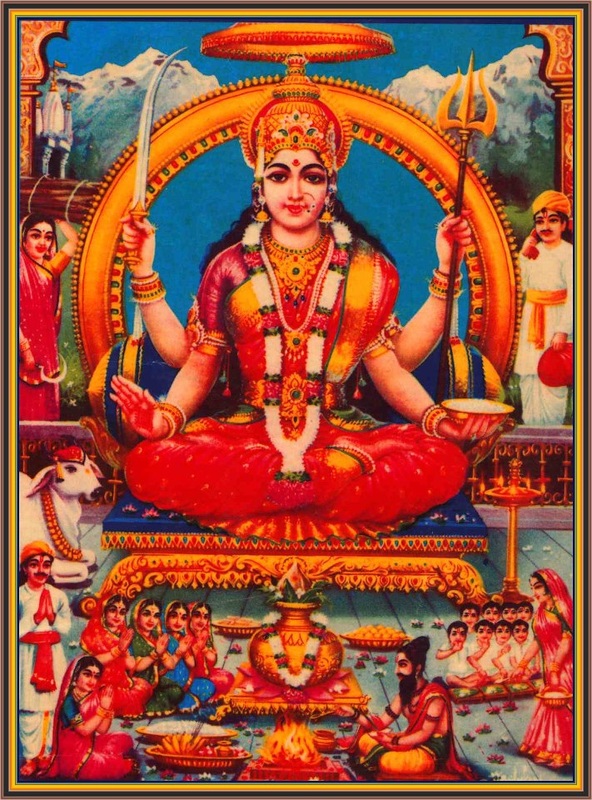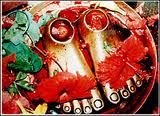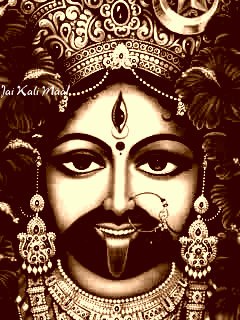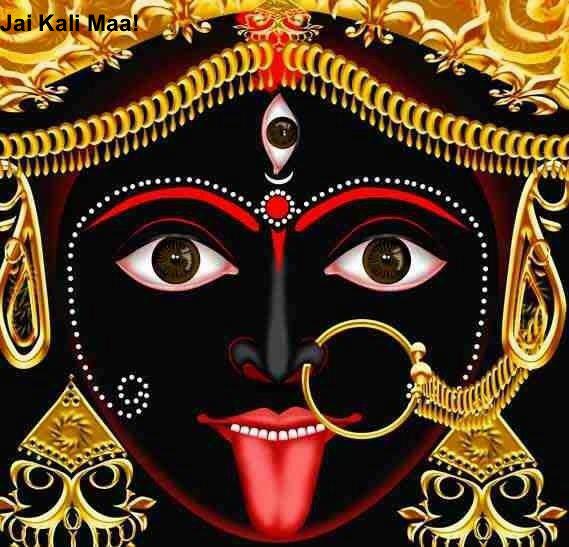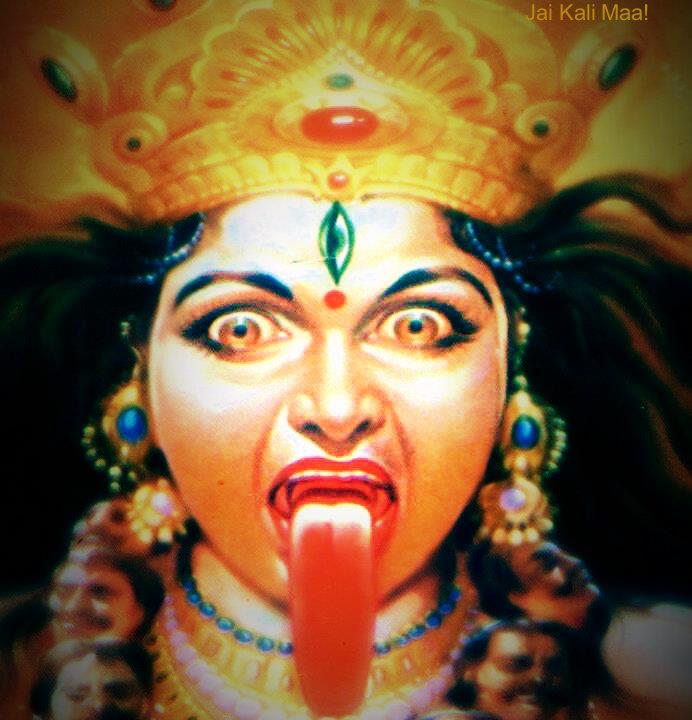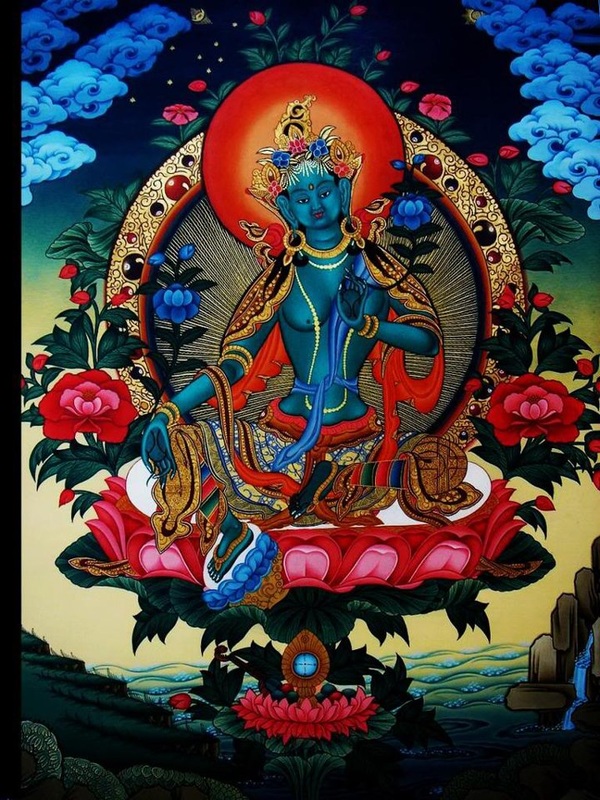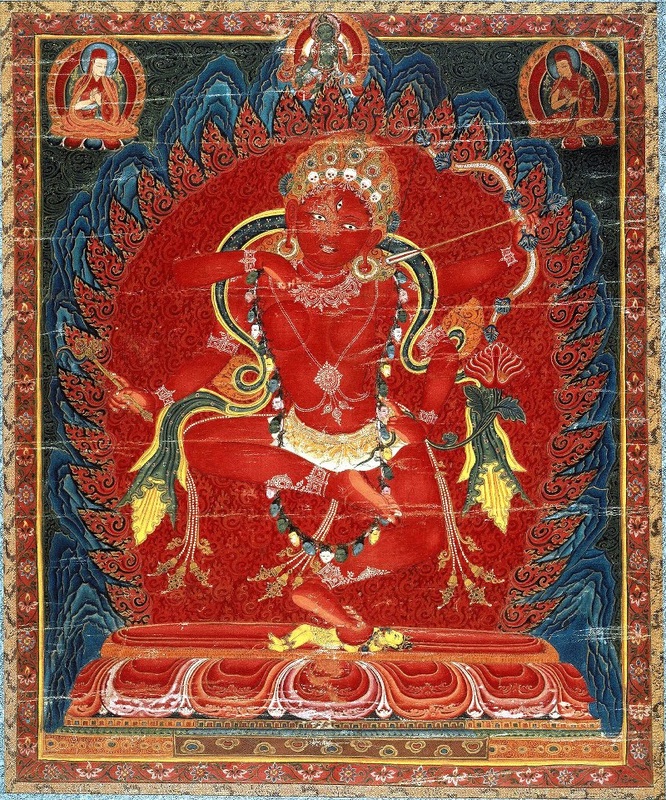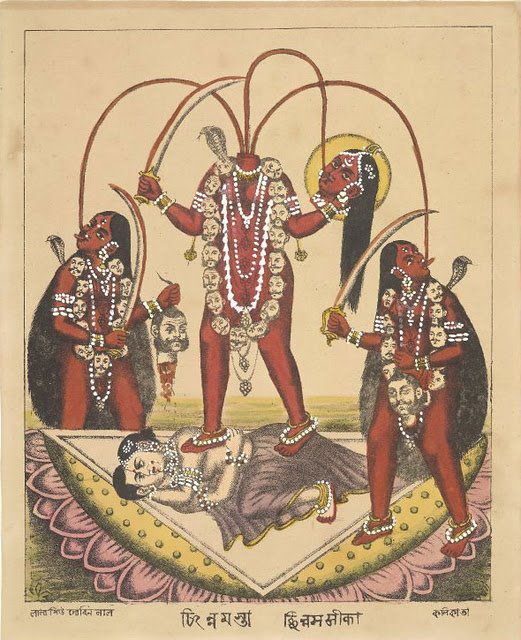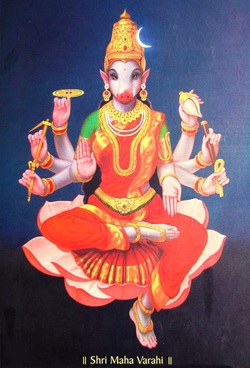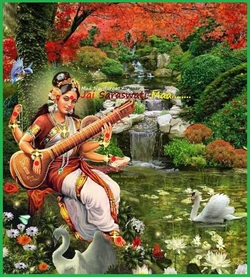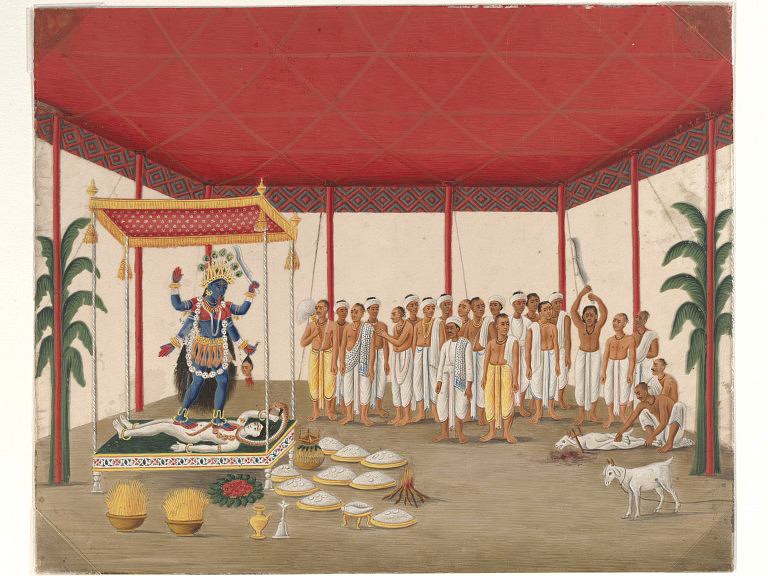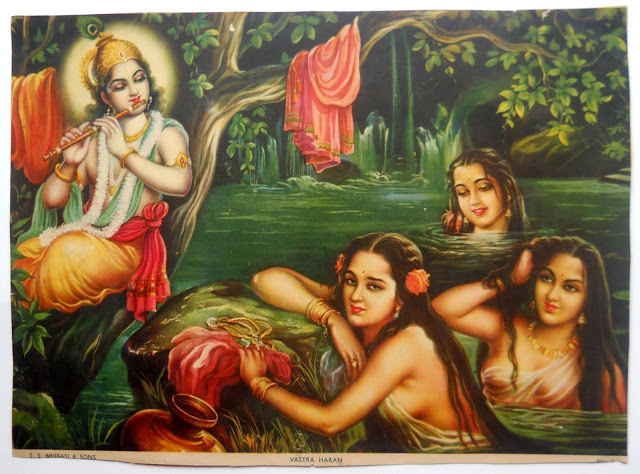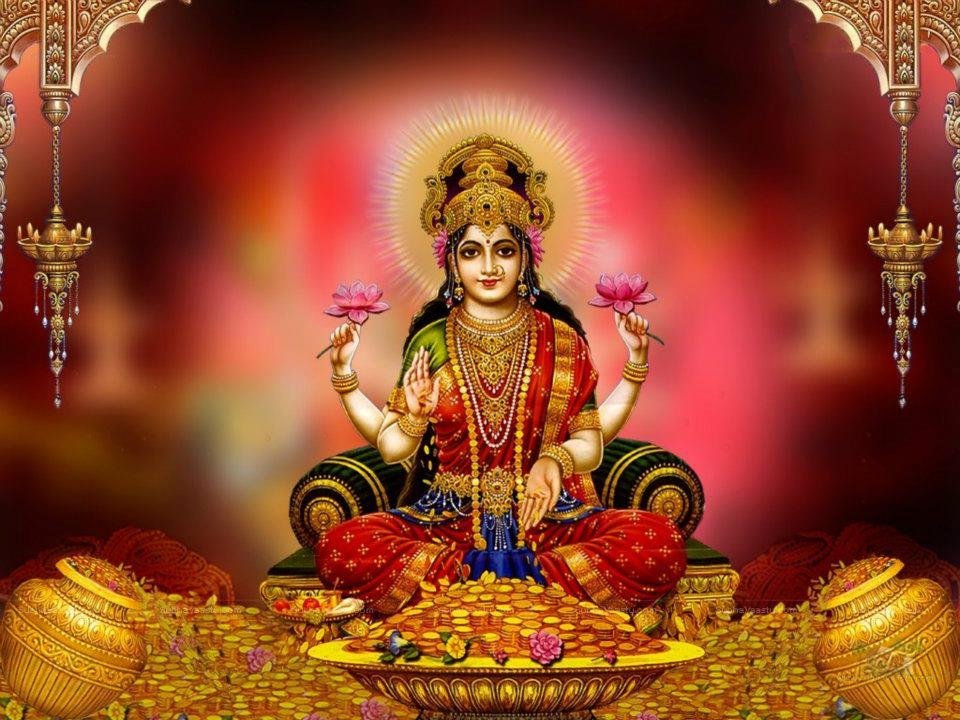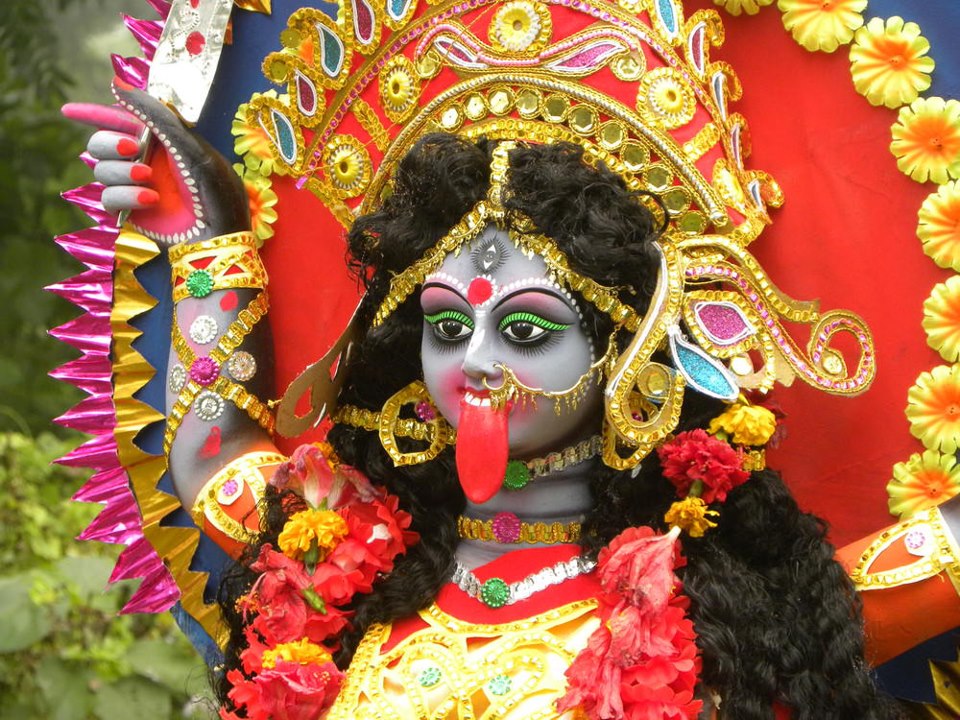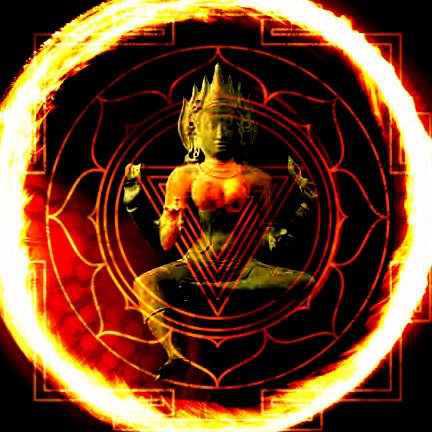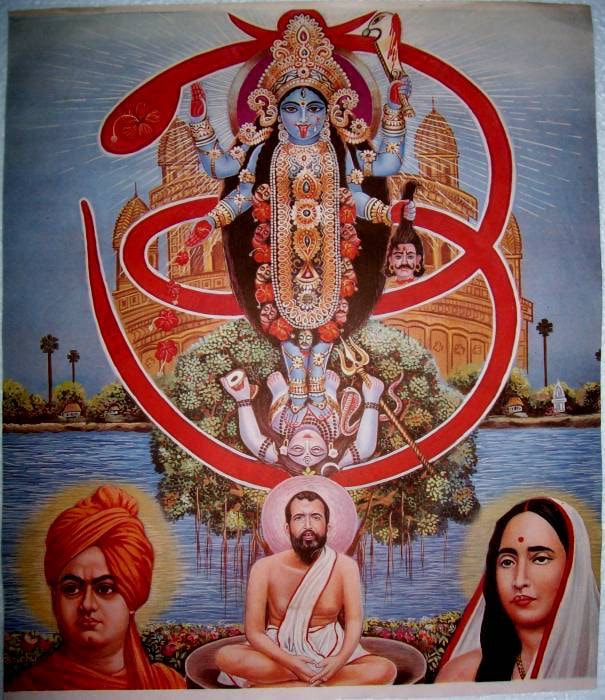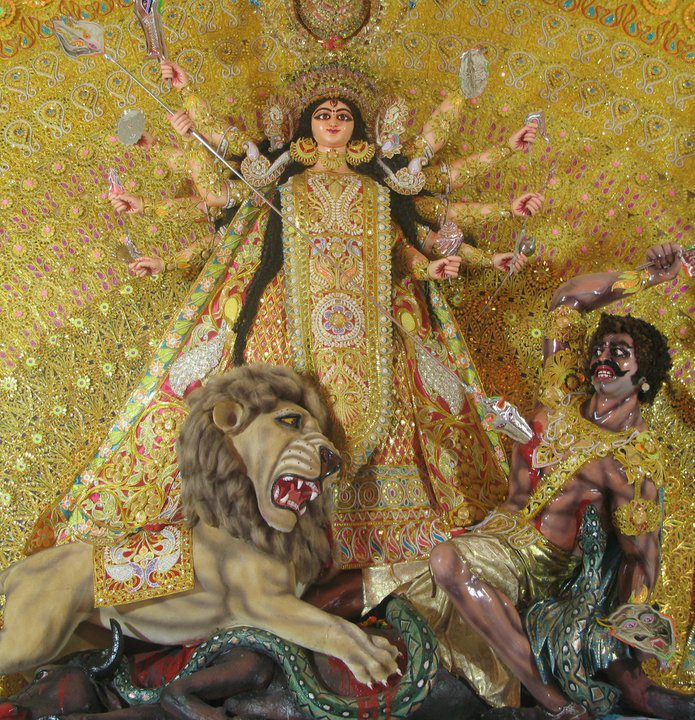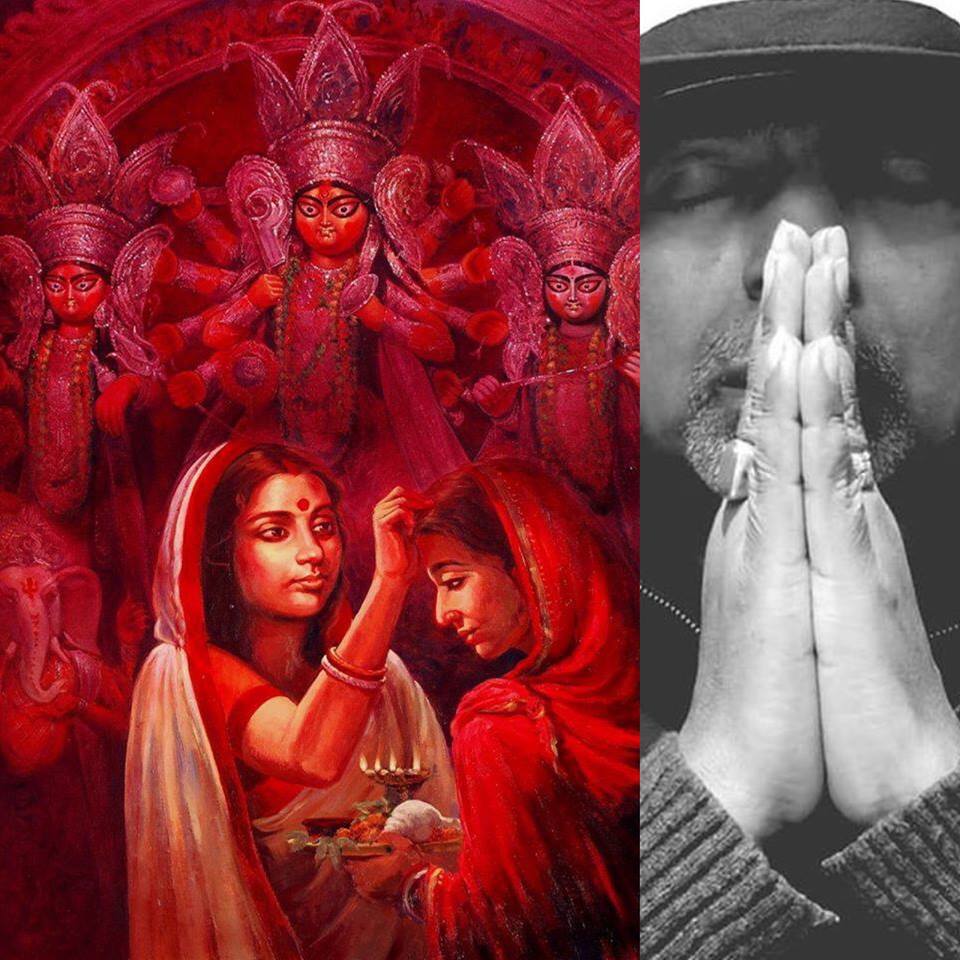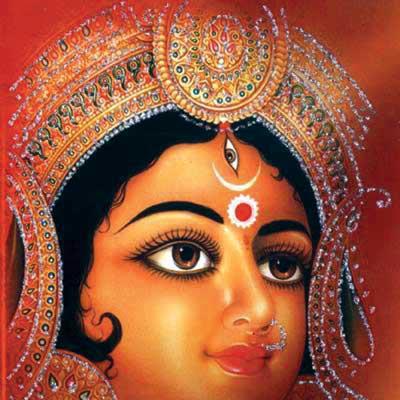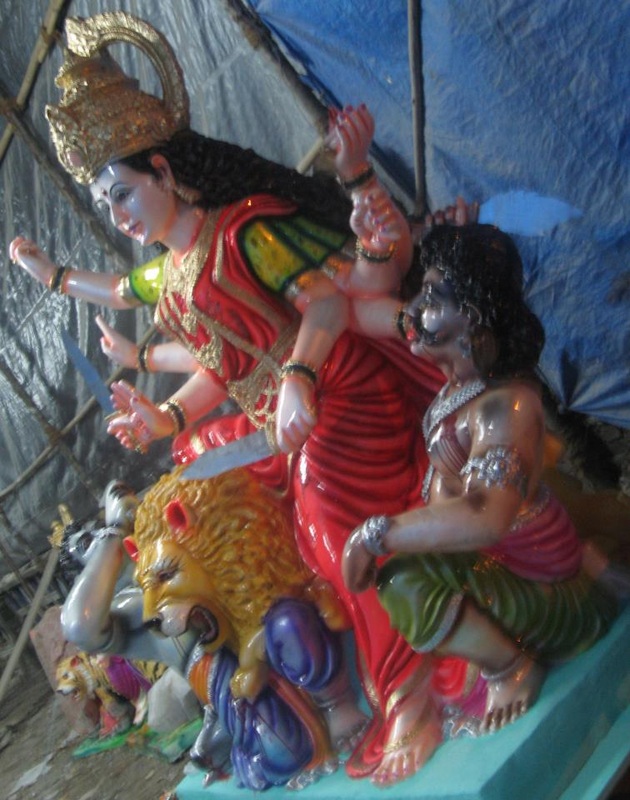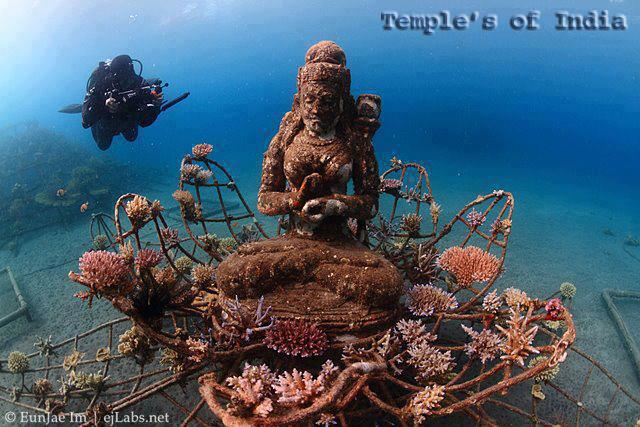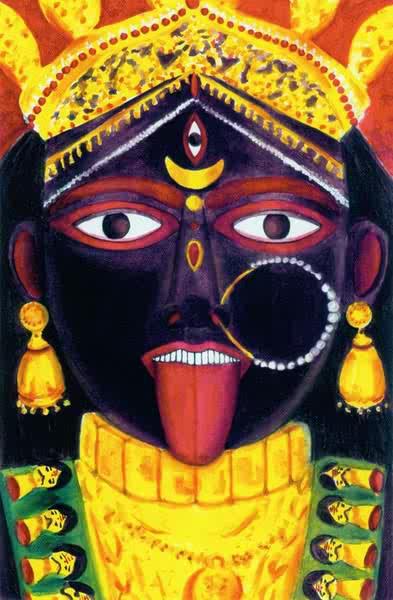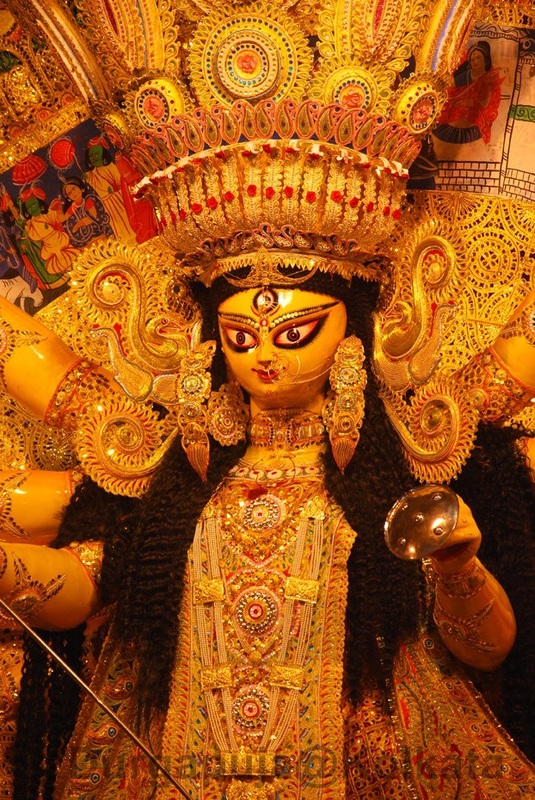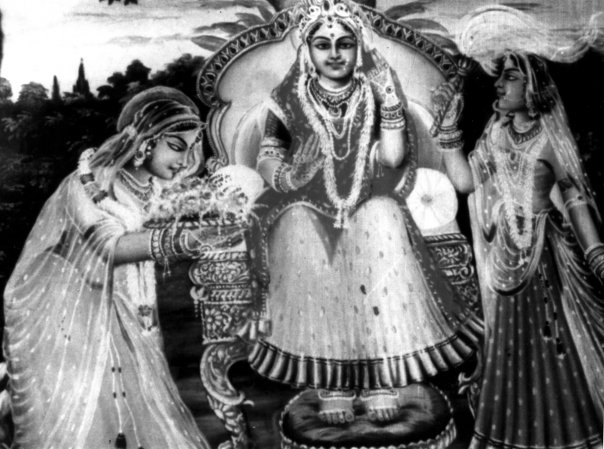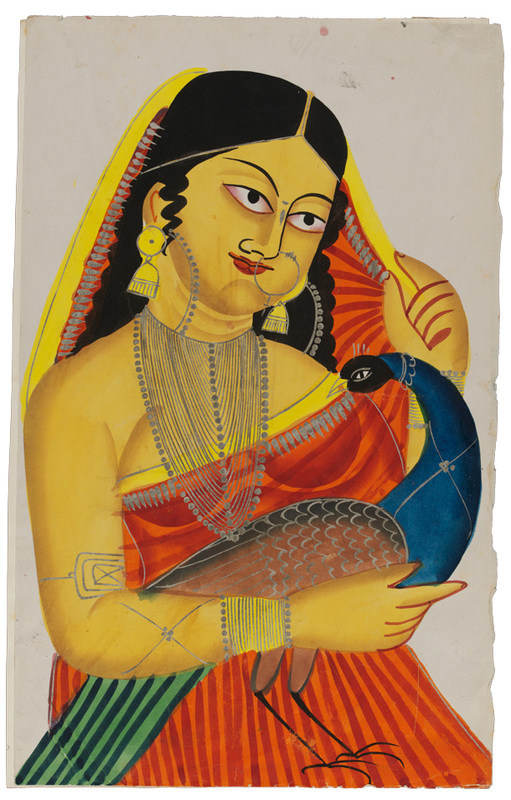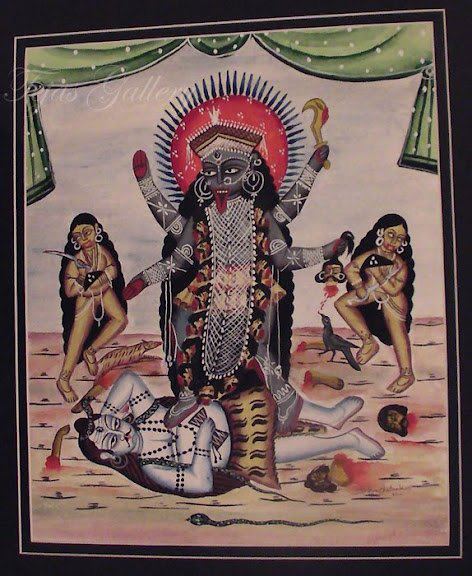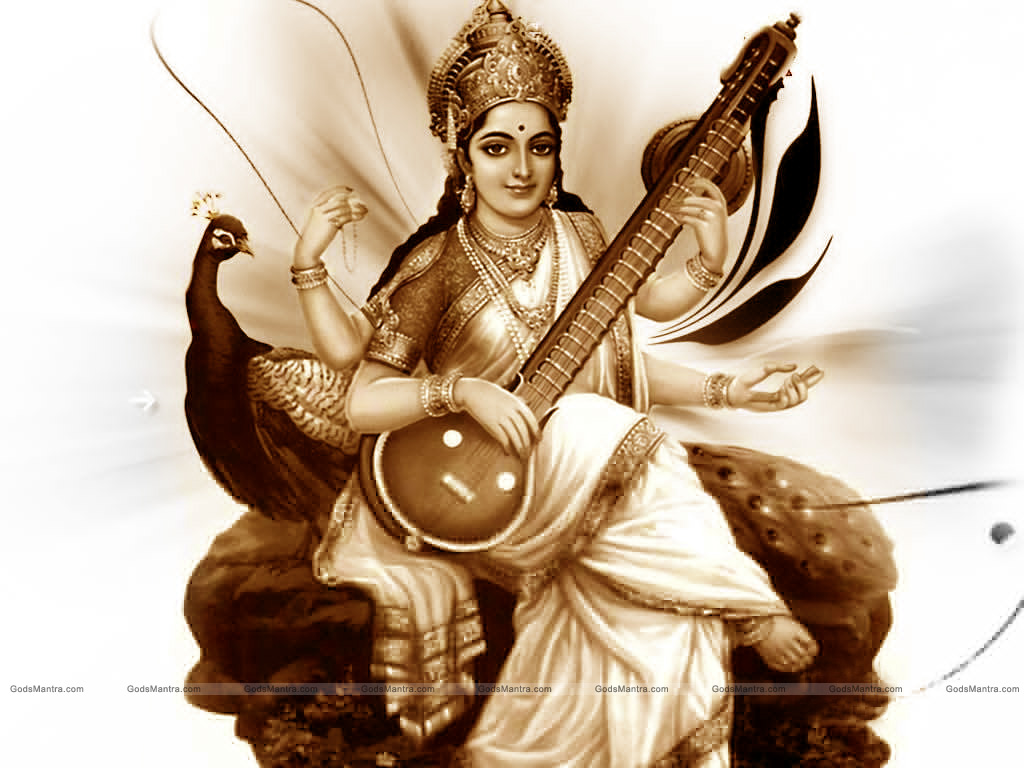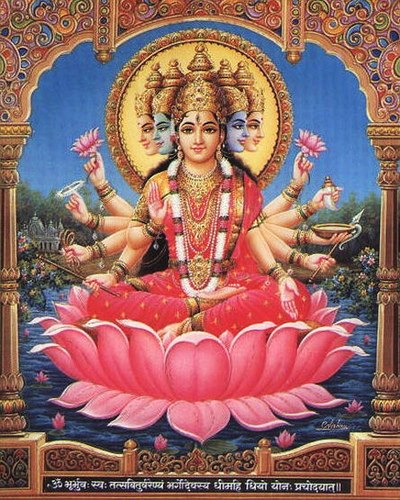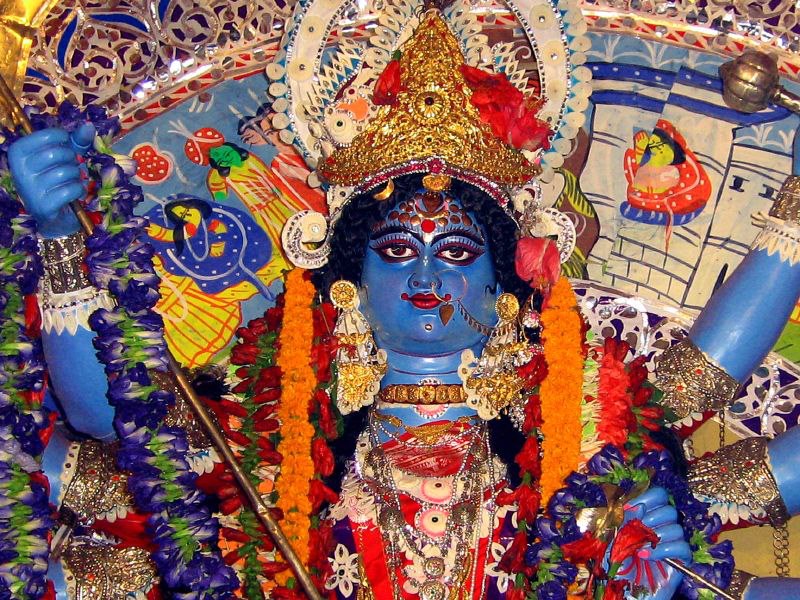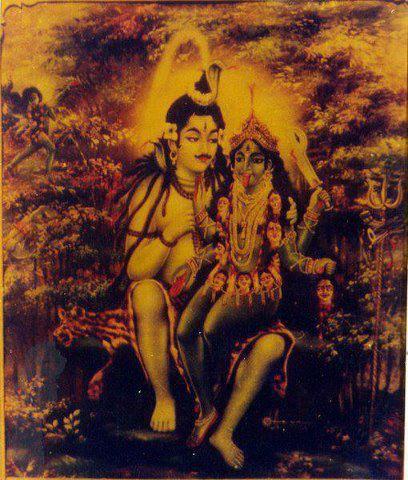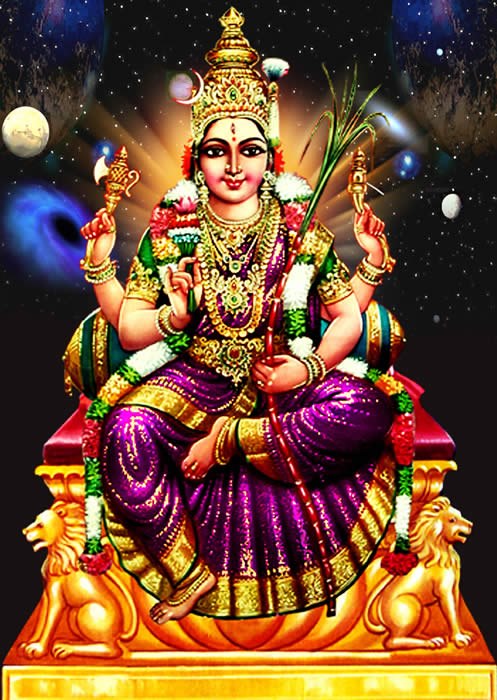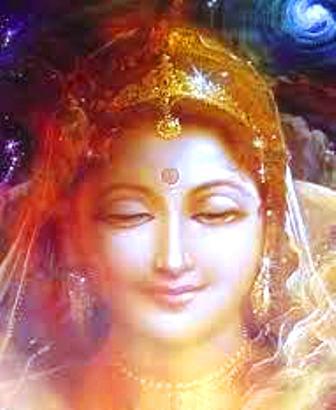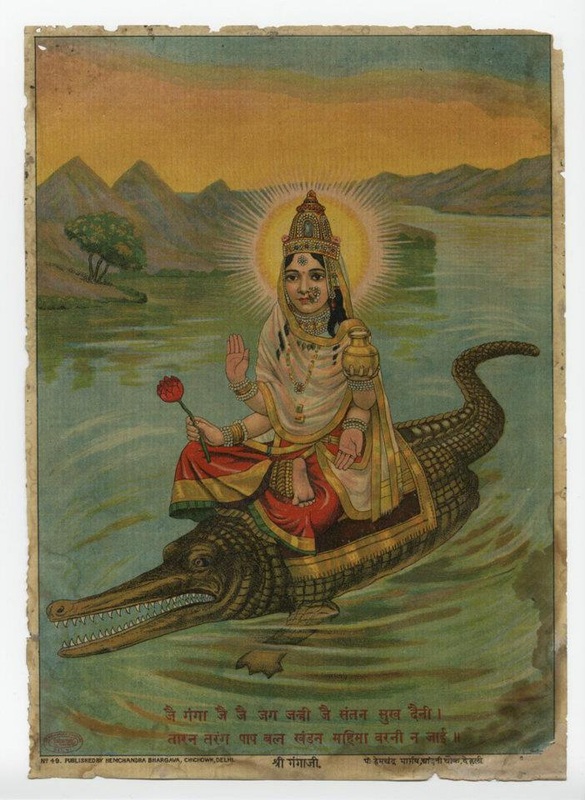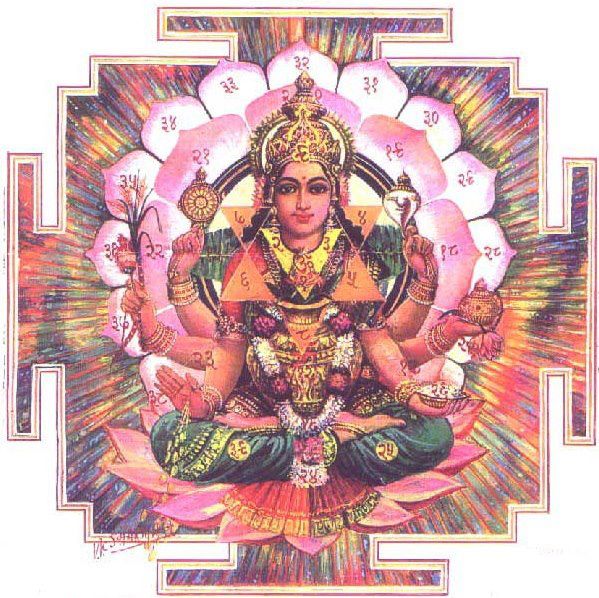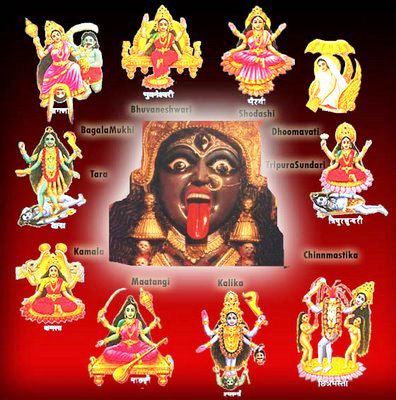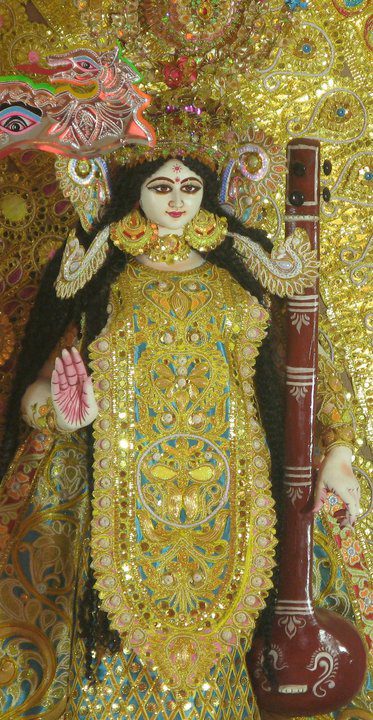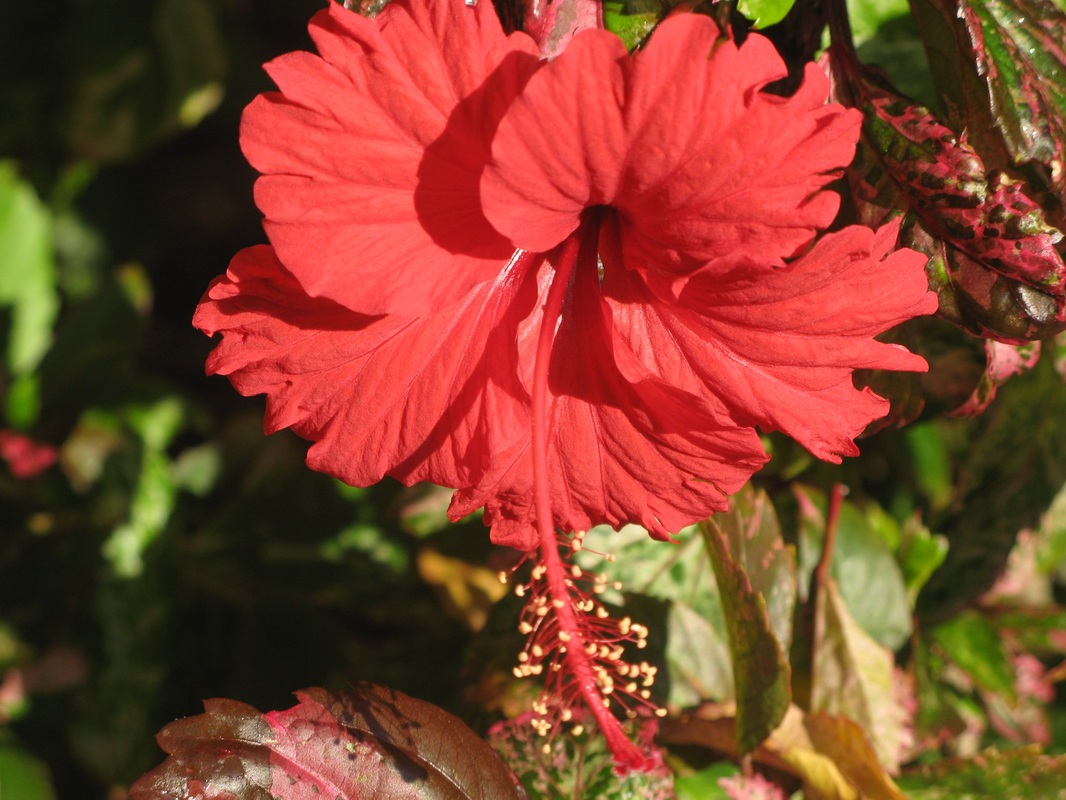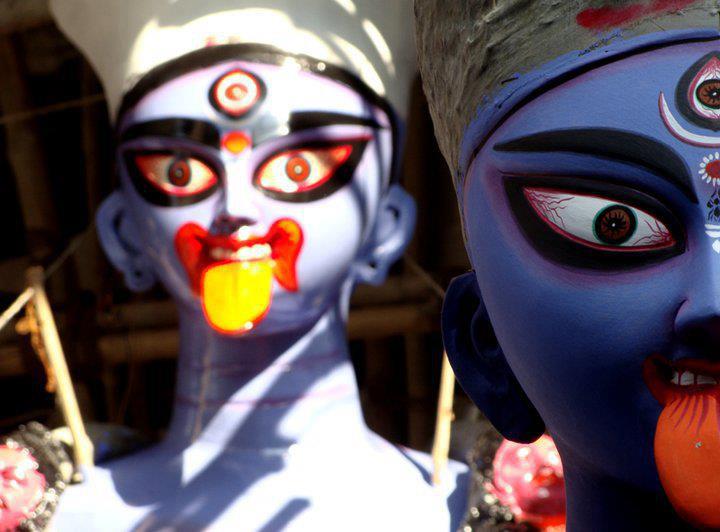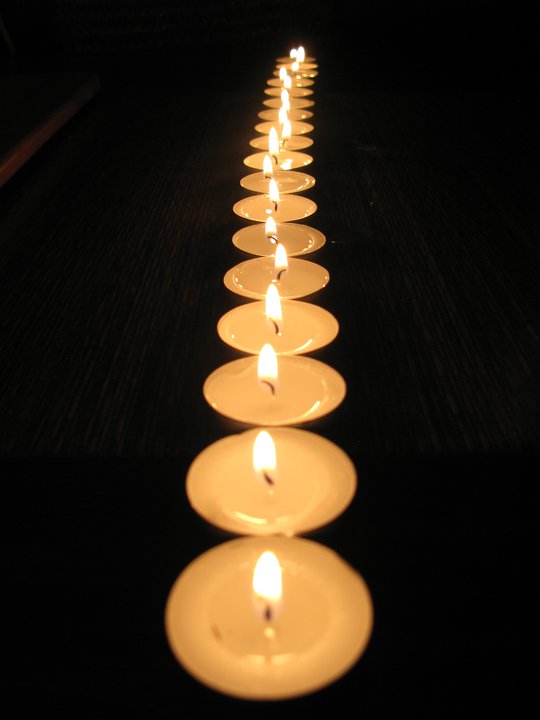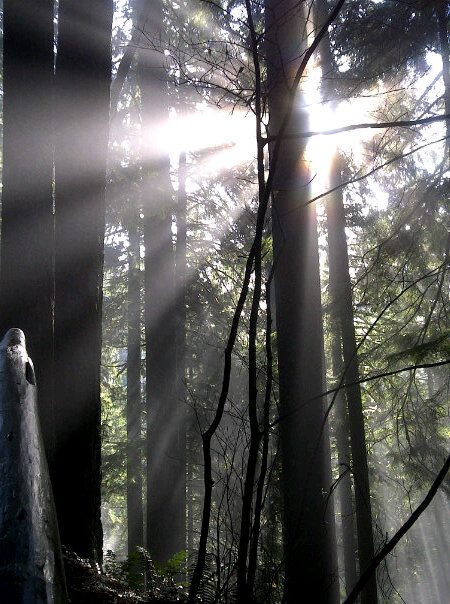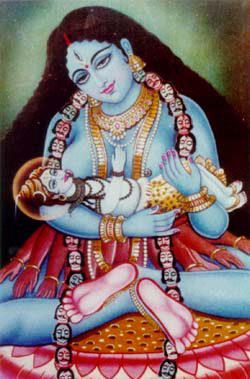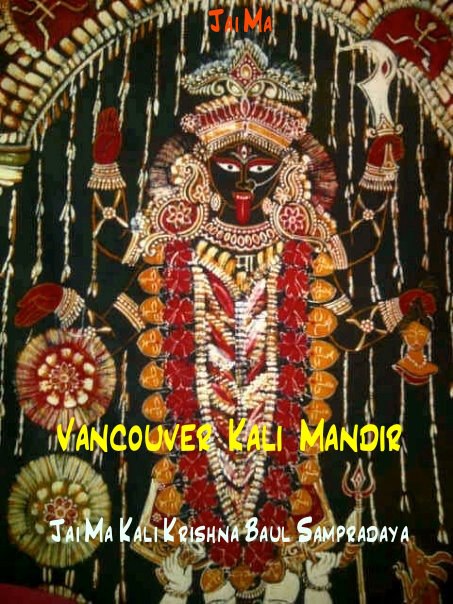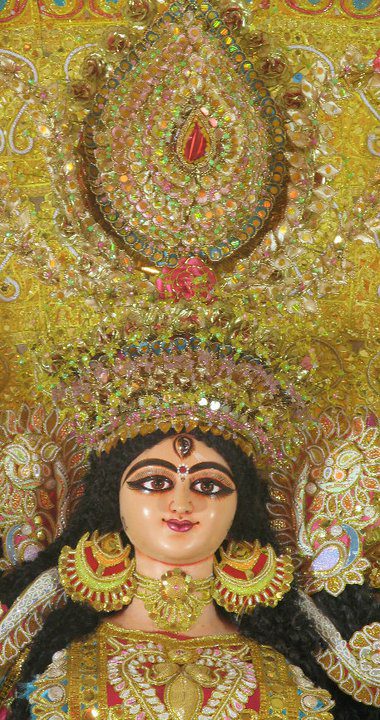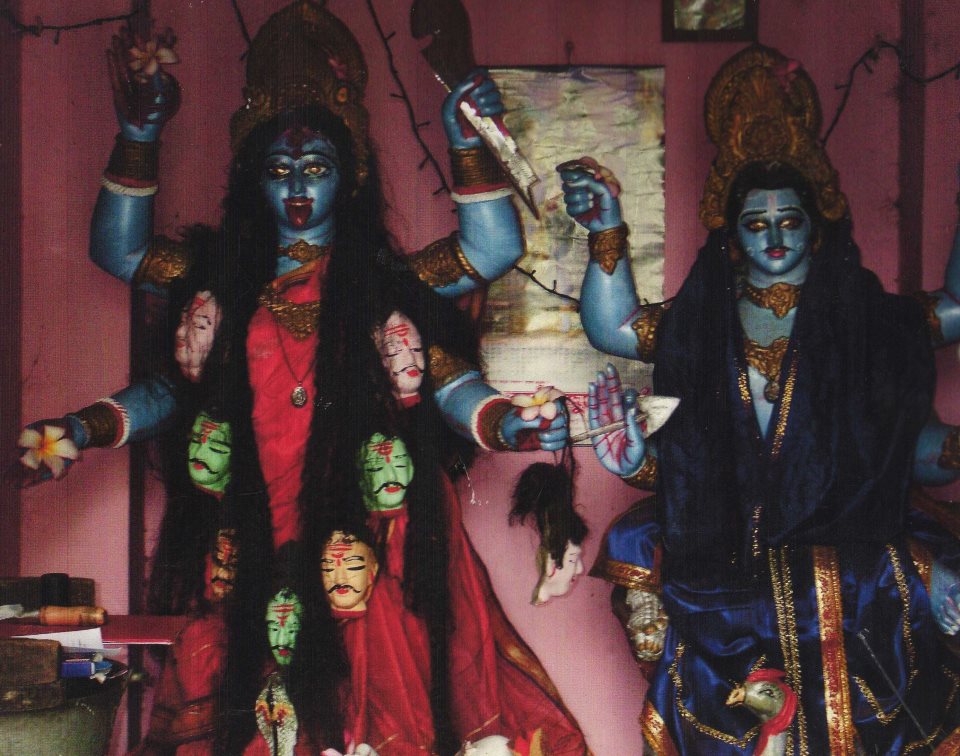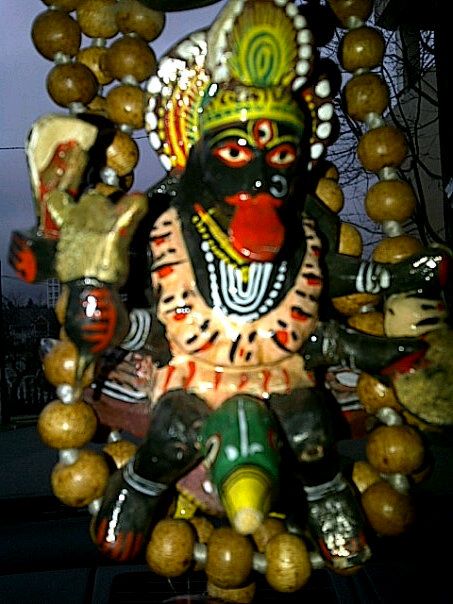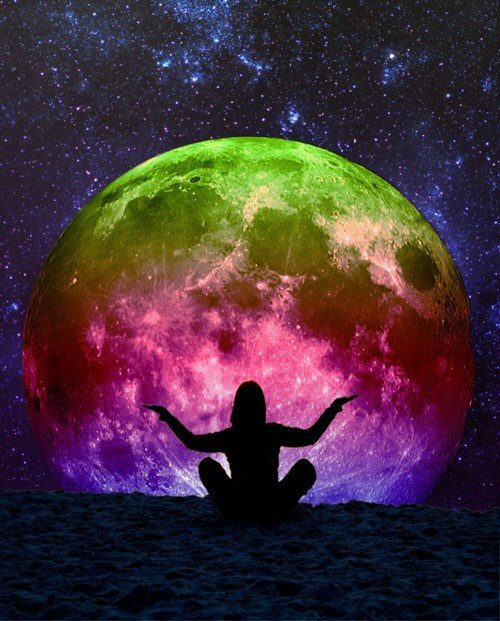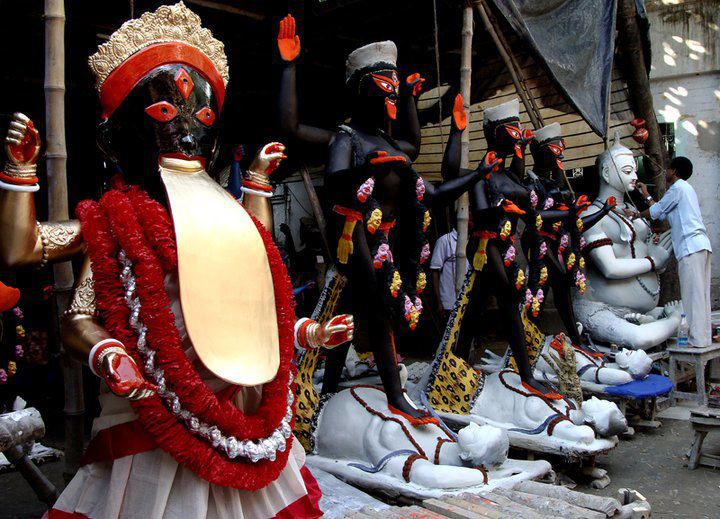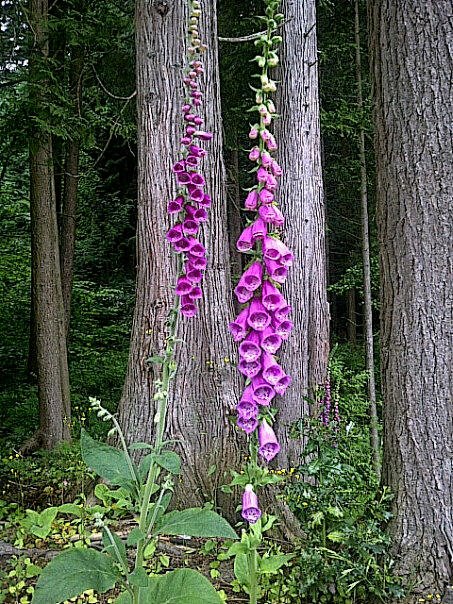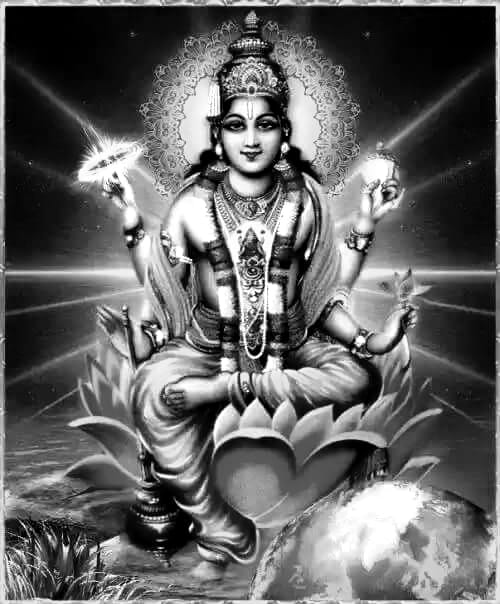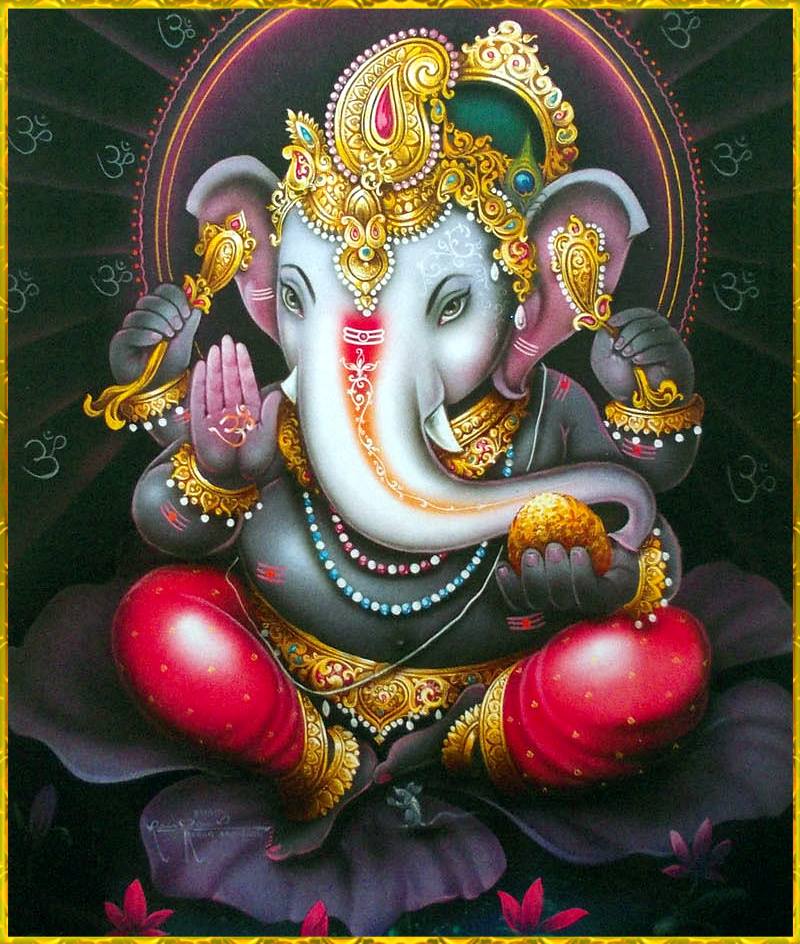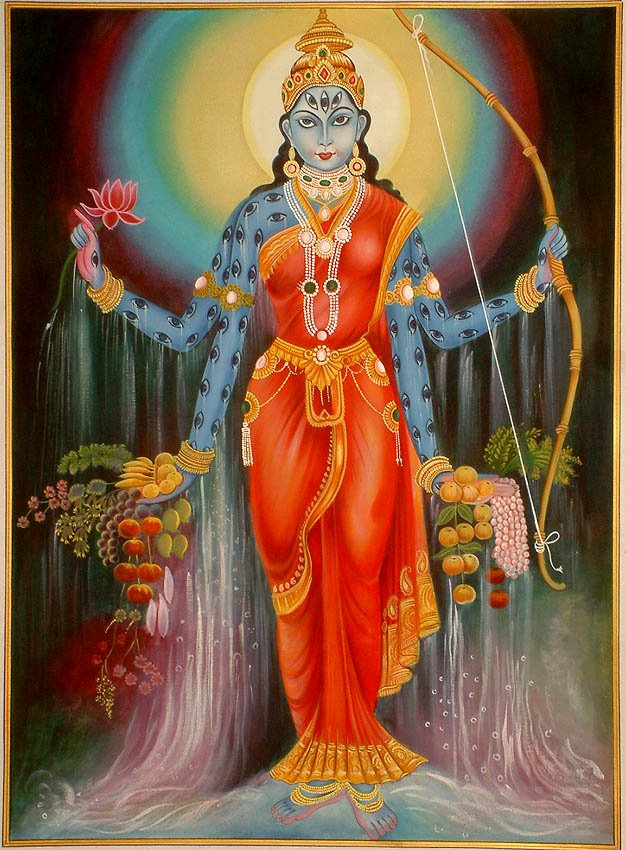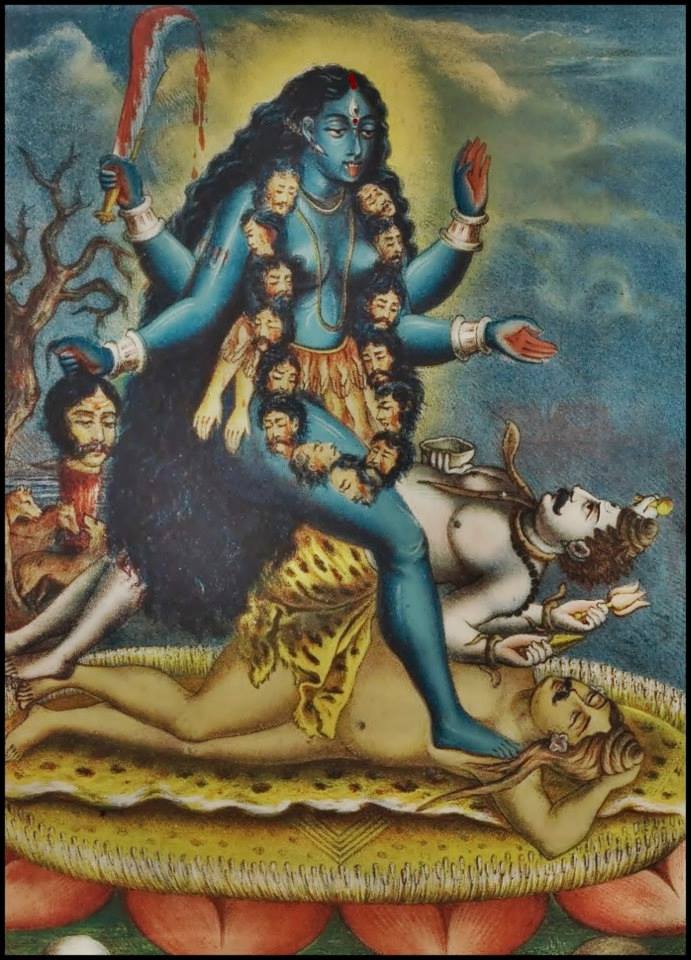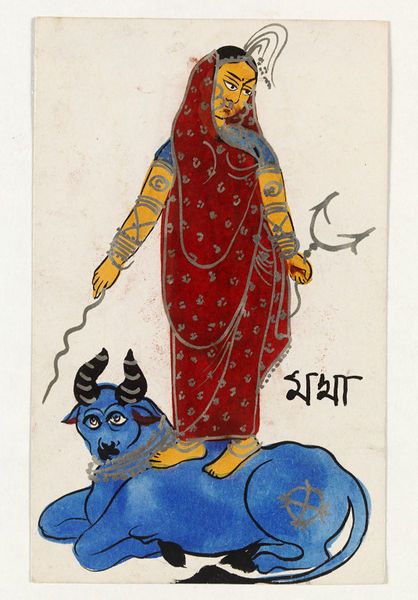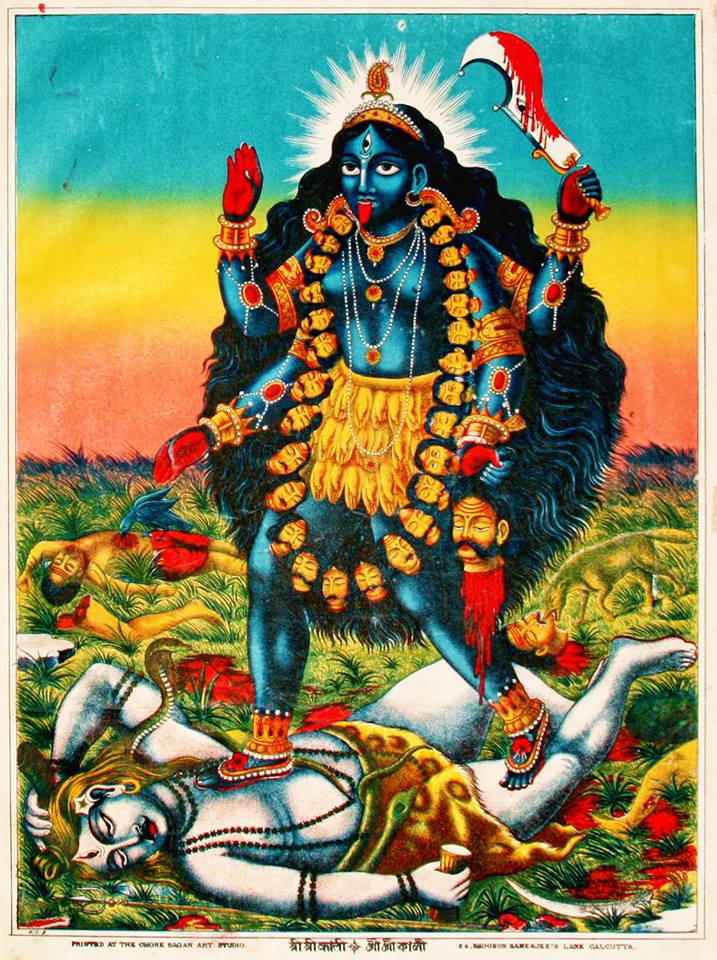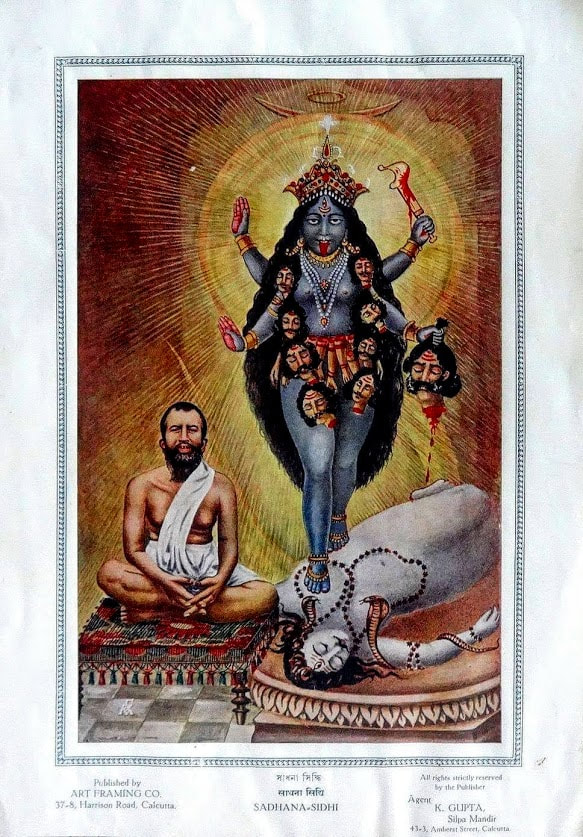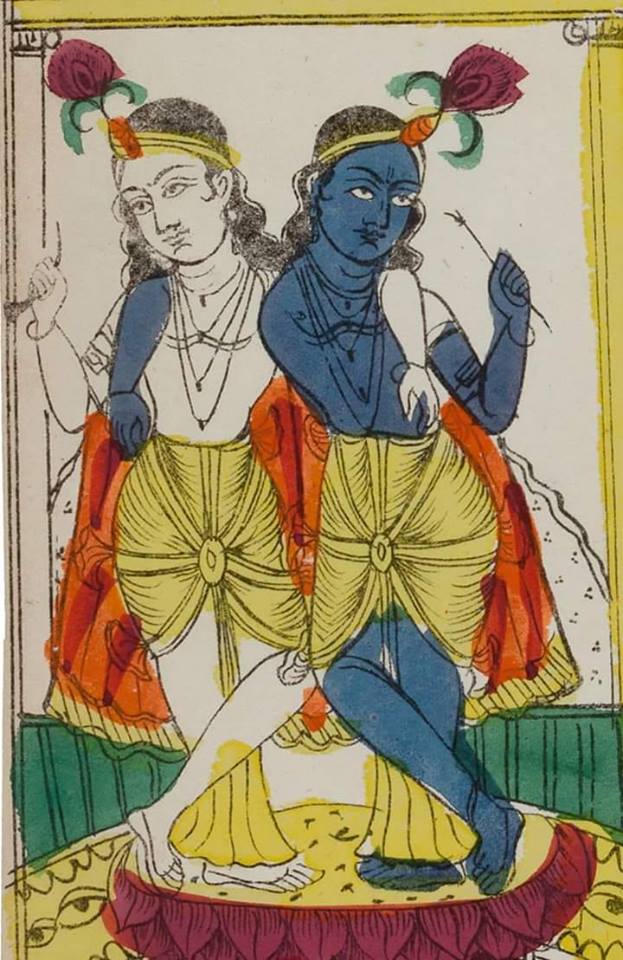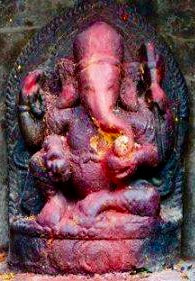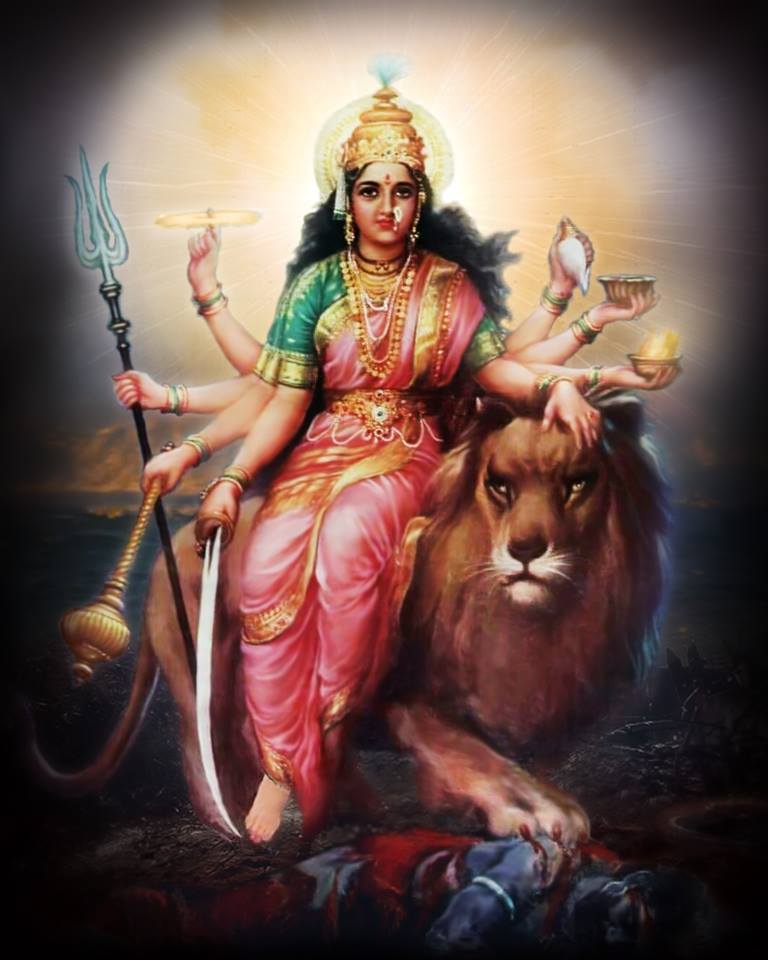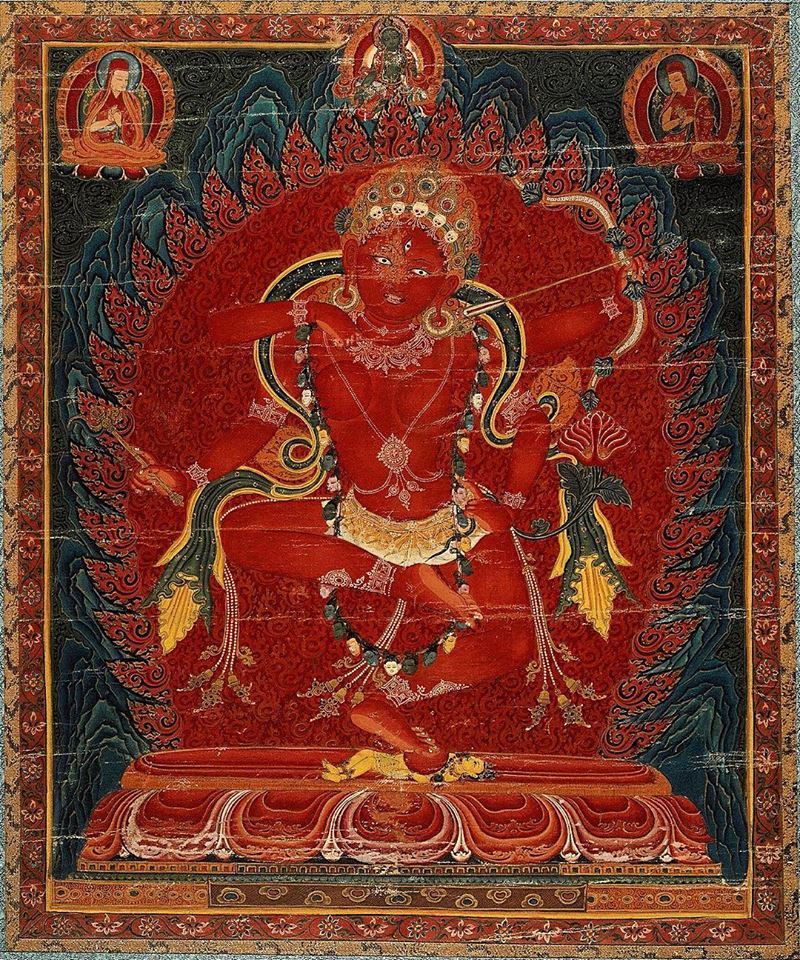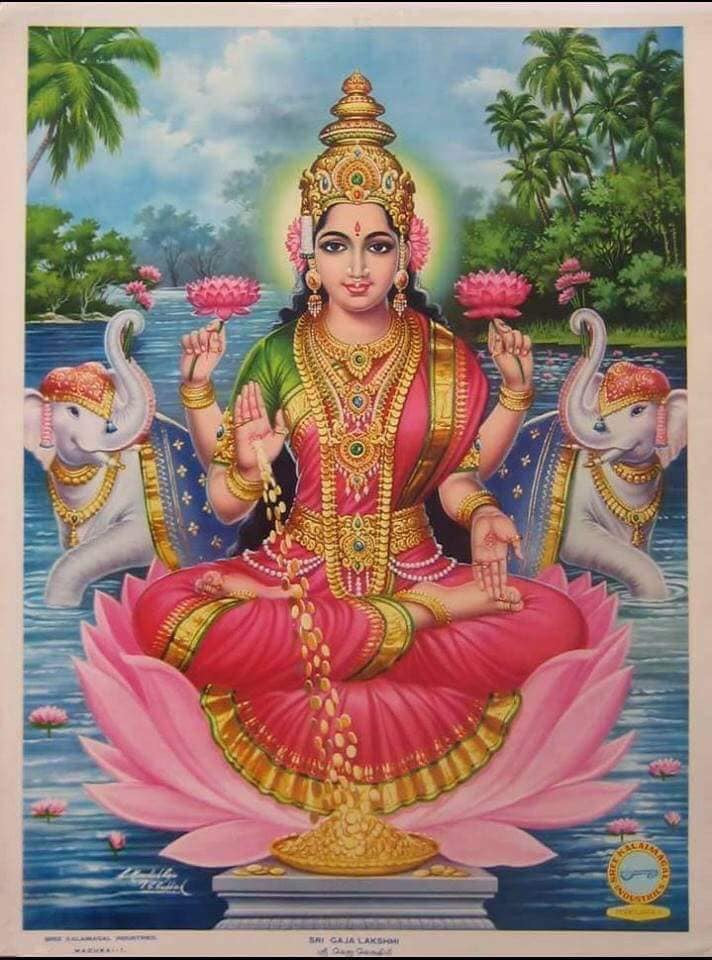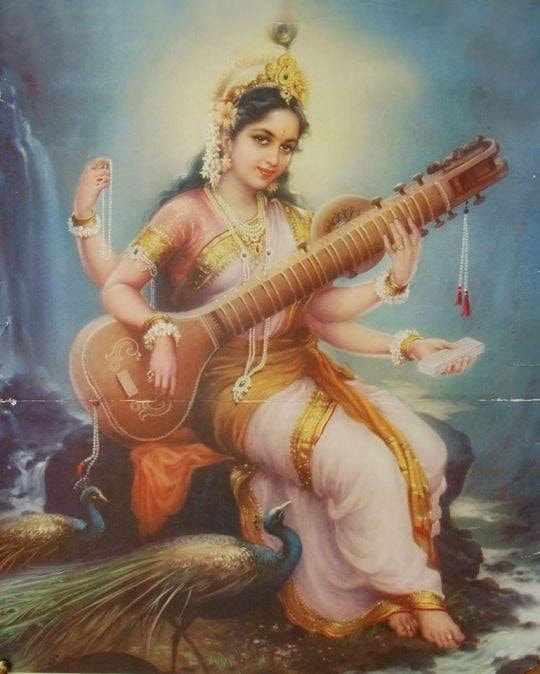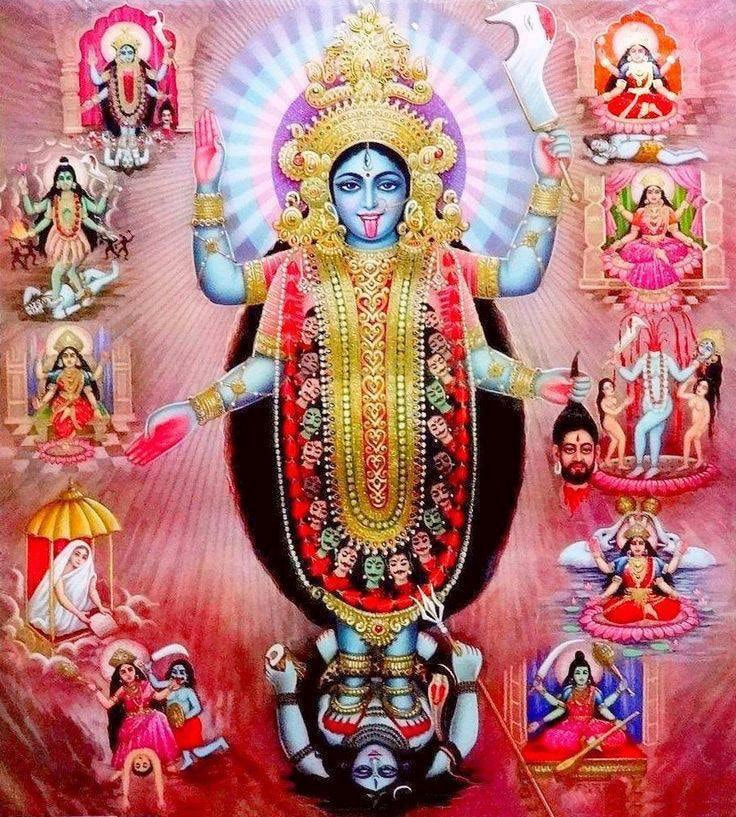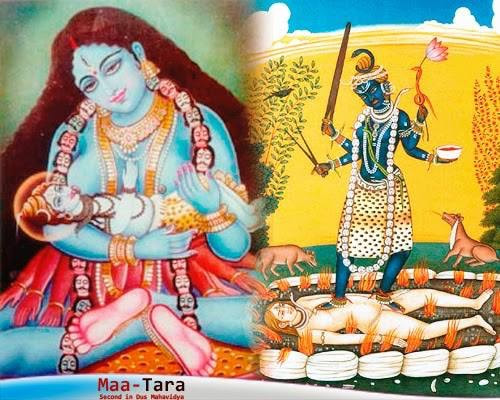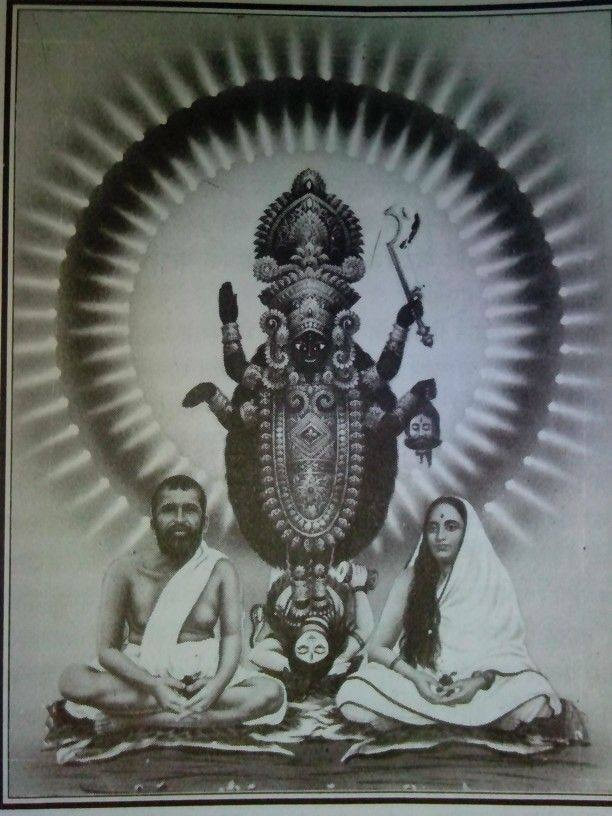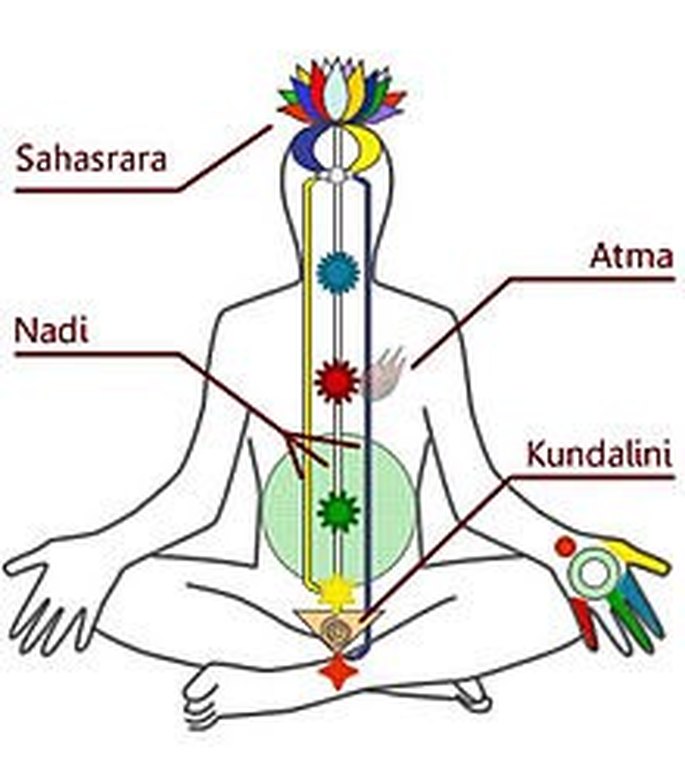
SHAKTA ADVAITA: At the beginning of Creation Goddess Kundalini took form and set in motion the wheel of manifestation. She bestowed her healing spirit into the womb and regenerative energy of female species of the earth. A woman’s femininity cannot exist apart from her Shakti and she is a metaphor for womanhood.
This Shakti goes on to be the consort of male gods and later manifested as goddess. She is represented in all her Shakti Peeths. She becomes grama-devata to suit regional stations of bhaktas life. The ultimate Shakti is Adi-Parashakti, the Ultimate Shakti. She manifests as Goddess Devi. Her reference in Tantra is Tripurasundari who manifests as Ten Mother Shaktis.
SHAKTI ENERGY: Devi Prakriti in the context of Shaktis as forces unifies Kundalini, Kriya, Itcha, Prana, Jnana and Mantrika Shaktis. Each is in a chakra. Prakriti means nature. The Gita describes prakriti as ‘primal motive force’. Kriya commonly refers to ‘completed action’ technique or practice within yoga. Differing from place to place’ kriya is the outward physical manifestation of awakened kundalini. They are also spontaneous movements resulting from the awakening of kundalini energy.
Iccha-shakti means will power and it is a technical subdivision of Shakti. Pran means life force. Kundalini yoga consist active and passive pranayama, extension of life force. Mantrika shakti refers to mantras but it may mean more than shakti. For instance, a person who absolutely speaks the truth, a satyavaan, may ultimately possess the power materializing his words. In Tamil there is a cliché ‘karu-naakan’ literally having black dots in the tongue. Their words always materialize.
SHAKTI YOGA: Shiva is omnipresent, impersonal and inactive. He is pure consciousness. Shakti is dynamic. Shiva and Shakti are related as Prakasa and Vimarsa. Shakti or Vimarsa is the power that is latent in the pure consciousness. Vimarsa gives rise to the world of distinctions. Shiva is Chit, Shakti is Chidrupini. Brahma, Vishnu and Siva do their functions of creation, preservation and destruction in obedience to Shakti. Shakti is endowed with Ichha, power of will, Jnana, power of knowledge and Kriya, power of action. Shakti-Tattva and Shiva-Tattva are inseparable. Shiva is always with Shakti. Shiva and Shakti are one.
Saktaism is not mere theory or philosophy. It prescribes systematic Sadhana of Yoga, regular discipline according to the temperament, capacity and degree of evolution of the Sadhaka. Sadhana means unfolding, rousing up or awakening of the power of Shakti. Shaktaism helps the aspirant to arouse the Kundalini and unite Her with Lord Siva and to enjoy the supreme bliss or Nirvikalpa Samadhi.
A Shakta does Sadhana which helps the union of Shiva and Shakti through the awakening of the forces within the body. He becomes a Siddha in the Sadhana when he is able to awaken Kundalini and pierce the six Chakras. The mode of Sadhana depends upon the tendencies and capacities of the Sadhaka.
KUNDALINI: All that is found in cosmos is also found in the individual, as the human being is a miniature of the universe. One way of realizing the Divine dwelling in the human body is by the Kundalini Sadhana. The word Kundalini is taken from Sanskrit word which stand for either "coiled up" or "coiling like a snake at the base of the spine".
It is described as a sleeping serpent. This word of Kundalini is more highlighted the serpentine nature as 'serpent power'. It is the ultimate energy of Mahashakti Prakriti. Generally this Shakti situated in the root of Mooladhaar Chakra, coiled in three and half circle around the Shivalinga.
Parvathi ever dwells with Shiva as His Shakti. She is the Divine Mother of this universe. The Kundalini is aroused and made to pass through the six lotus centers in the Spine, piercing each knot on its way up to the seventh center called Sahasrara – the 1000 petalled lotus on the head area, where it unites with Shiva. This is the realization of the Sakta – the goal of Sadhaka.
Puranas and legends metaphorically explain Goddess Kundalini travelling up the vertebrae just to meet her Divine Mate, Shiva. In meeting him, there is complete union of Spirit and Matter. Parvati tries to woo Shiva. The Lord is unmoved and sits atop mountains meditating. Parvati then went into the forest and performed rigorous tapas, wearing nothing to protect her tender body from harsh weather, eating nothing, not even a leaf. The forest ascetics admired her tapas and spiritual progress and named her Aparna.
Of this the sage Narada said that he saw Parvati as Kundalini rising across Shiva’s spine to the eternal Self. It was Parvati’s power of tapas that took Shiva out of is meditation. According to this mythological symbolism, when the goddess Shakti is awakened, she sweeps us up in her wildest passion to join up with her Lord Shiva in crown chakra. This Mystical Marriage symbolically represents Yoga or union of the male and female energies in our bodies which give birth to our multidimensional realization.
The Goddess Kundalini has been compared to a jungle fire which burns up an enormous jungle to ashes. The other assessment has been complete to an underwater which rises up in the ocean as fire and provides the ocean totally devoid of water. The causes of it are lead to an earthquake when central fire of land explodes. Goddess Kundalini cannot be memorized for interest or egotistical reasons.
SRI RAMANA MAHARISHI: Kundalini energy is nothing but the natural energy of the Self, where Self is Paramatma, the universal consciousness present in every being, and that the individual mind of thoughts cloaks this natural energy from unadulterated expression. Initial kundalini awakening is just the beginning of actual spiritual experience. Atma-vichara or Self-inquiry meditation is considered a very natural and simple means of reaching this goal.
Hara Hara Mahadeva
Yogi Ananda Saraswathi
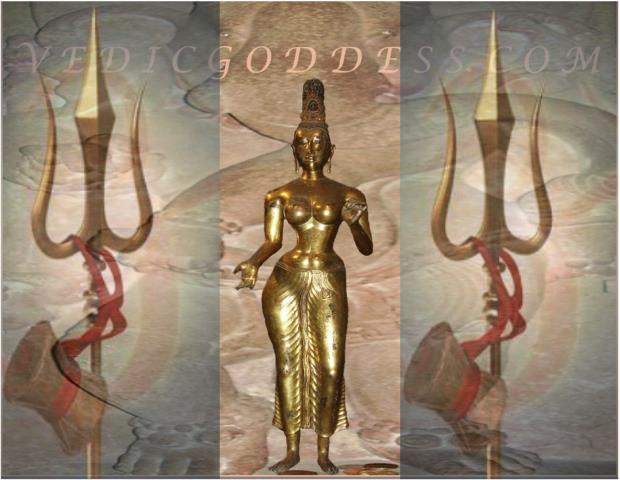
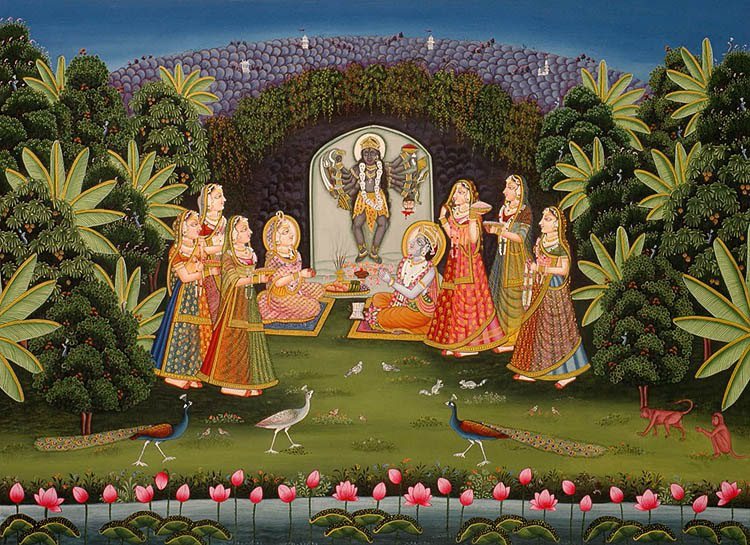

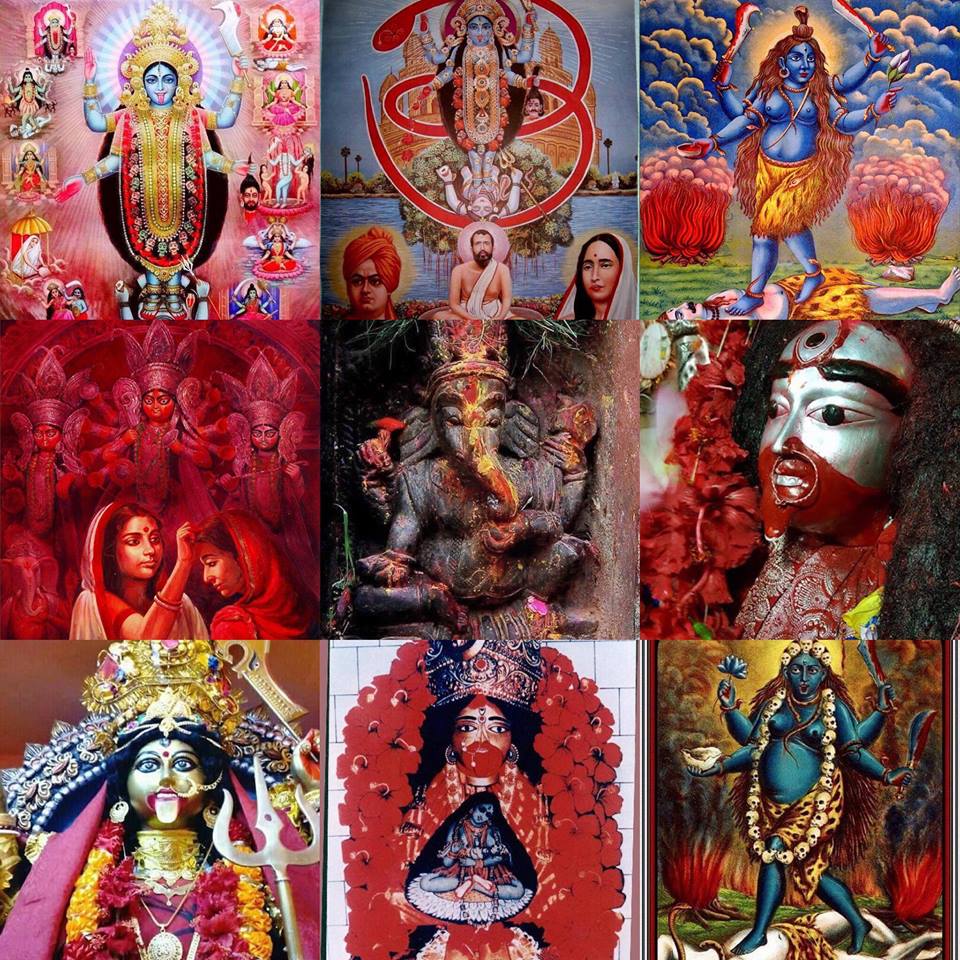
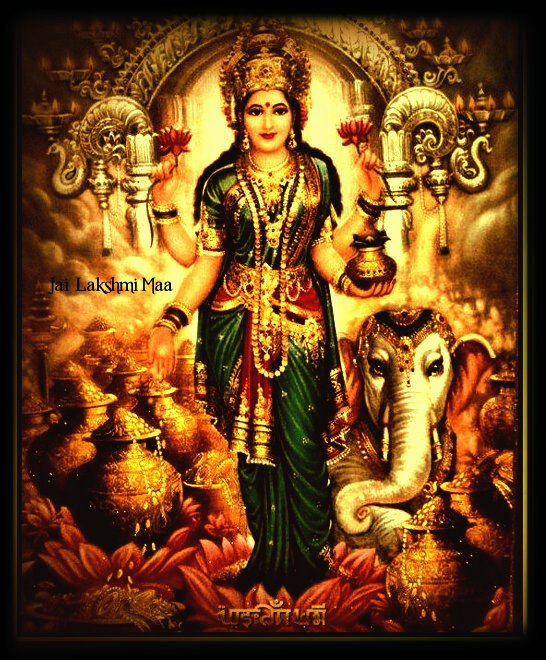
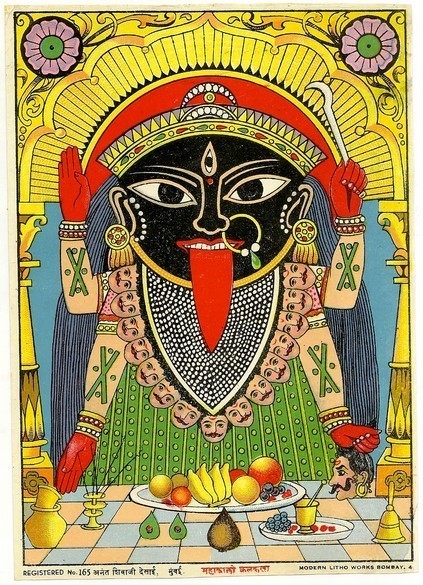
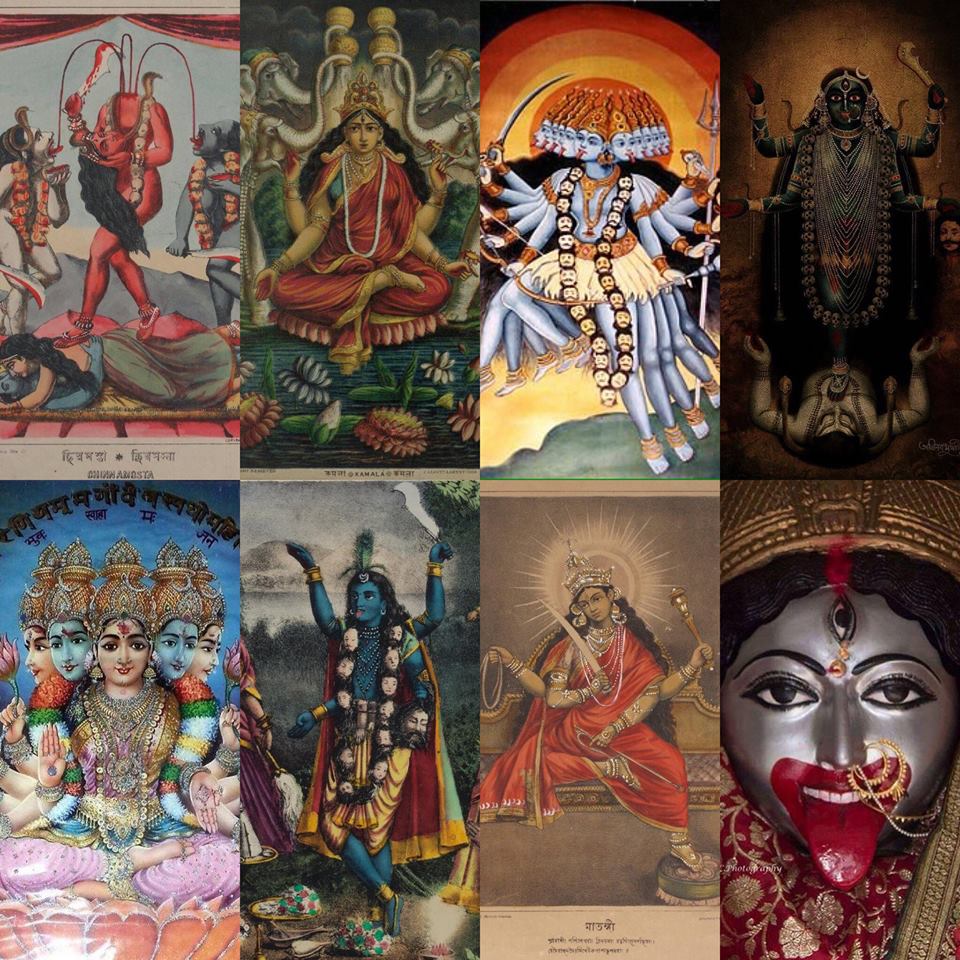
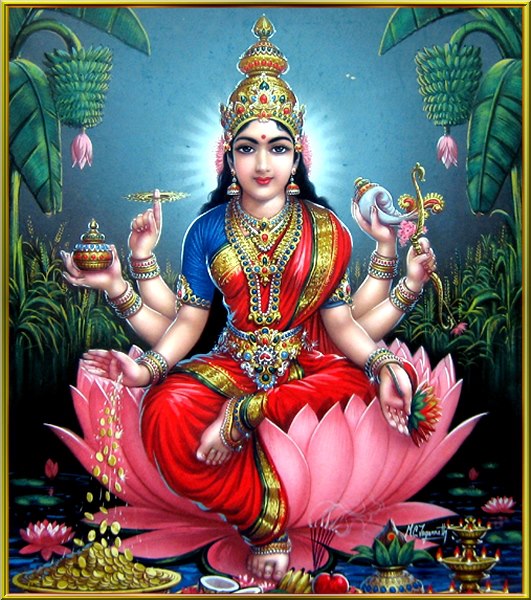
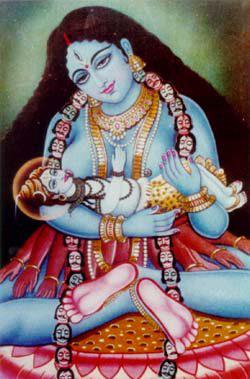
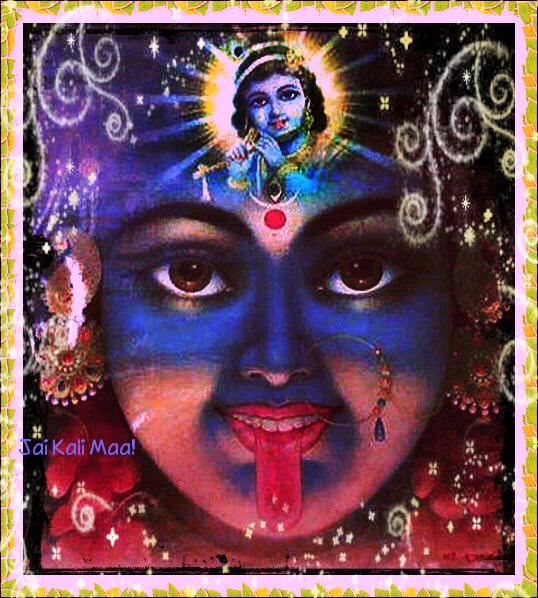
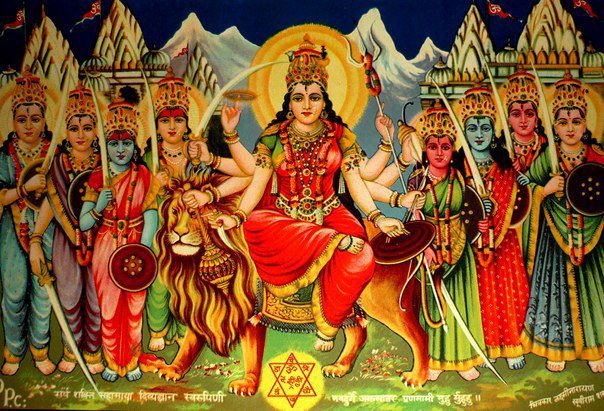
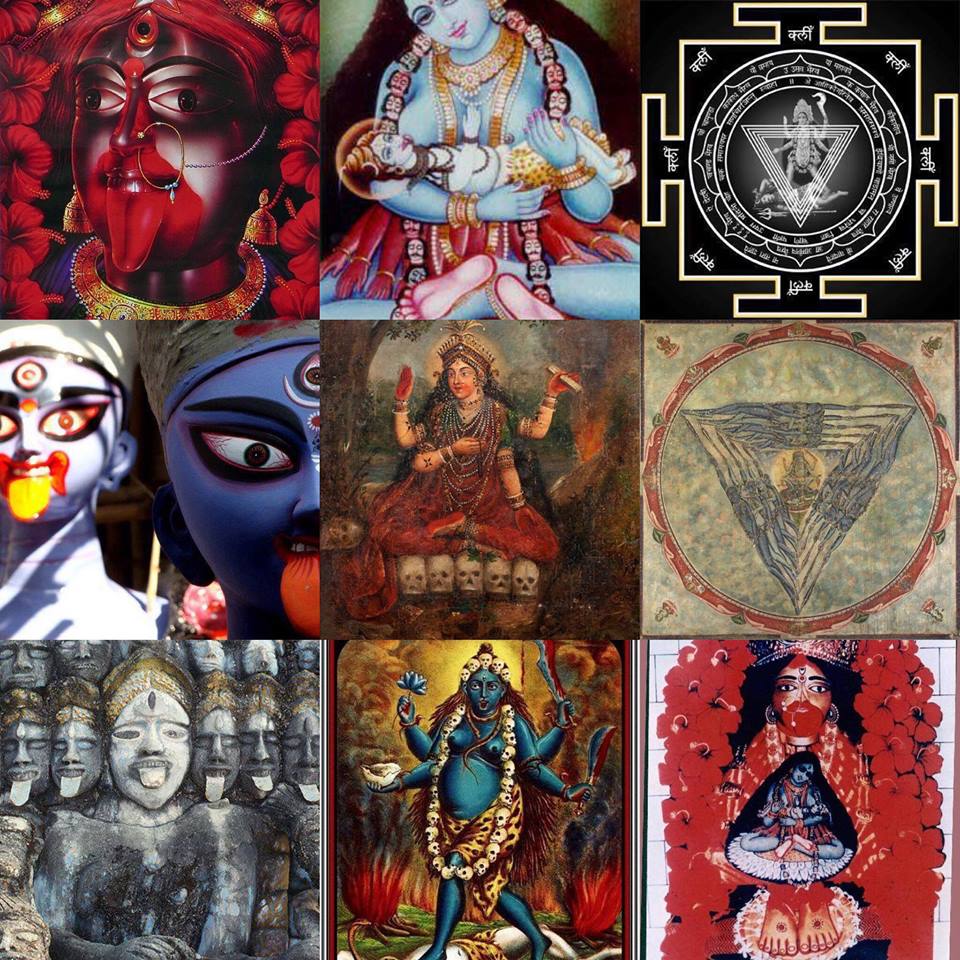
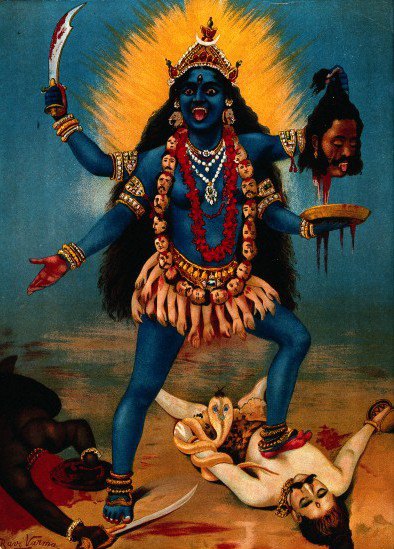
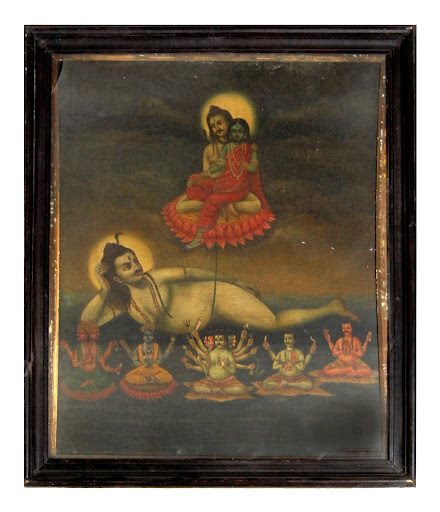
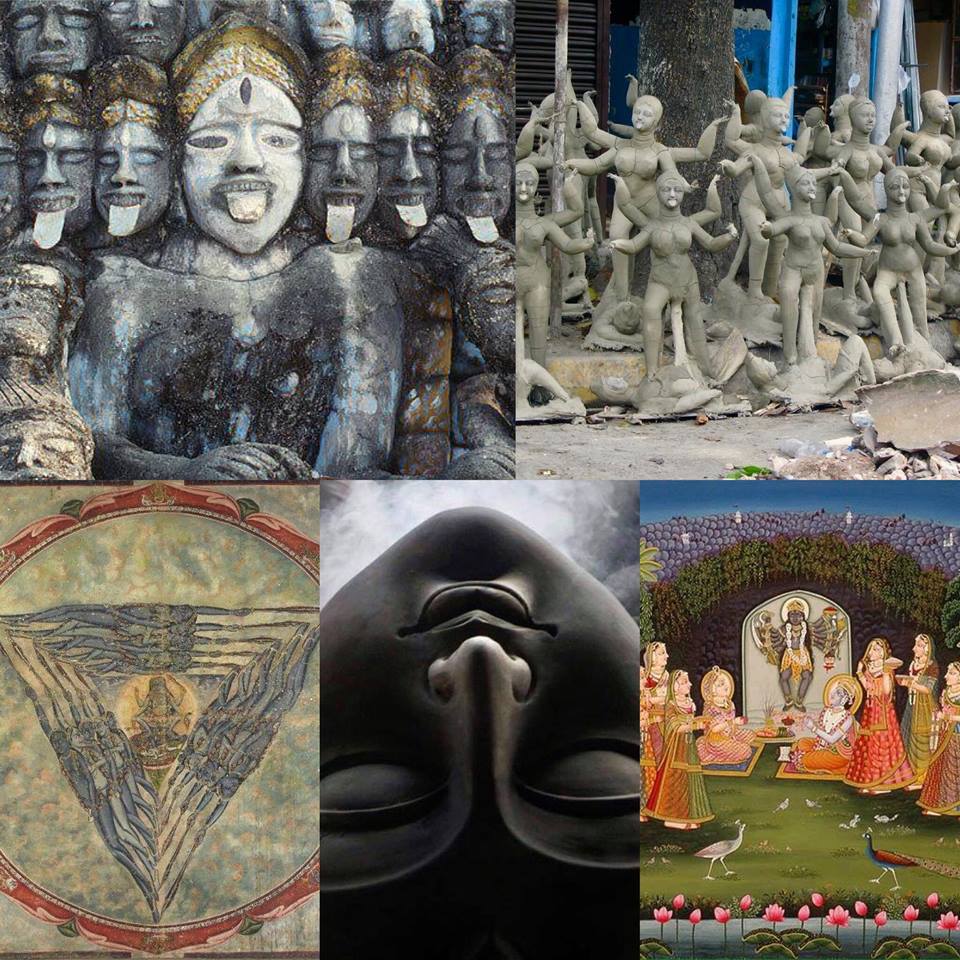
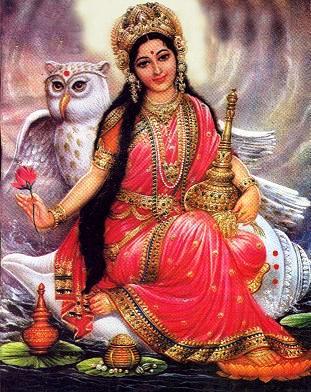
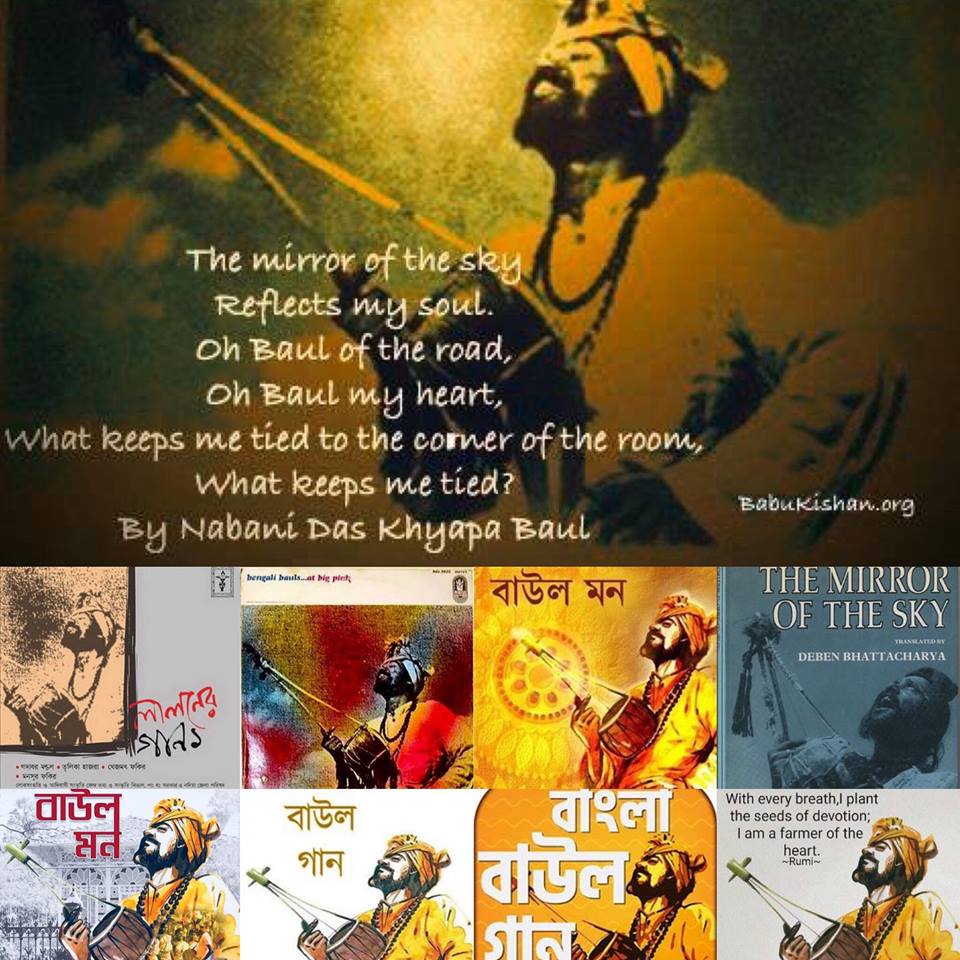
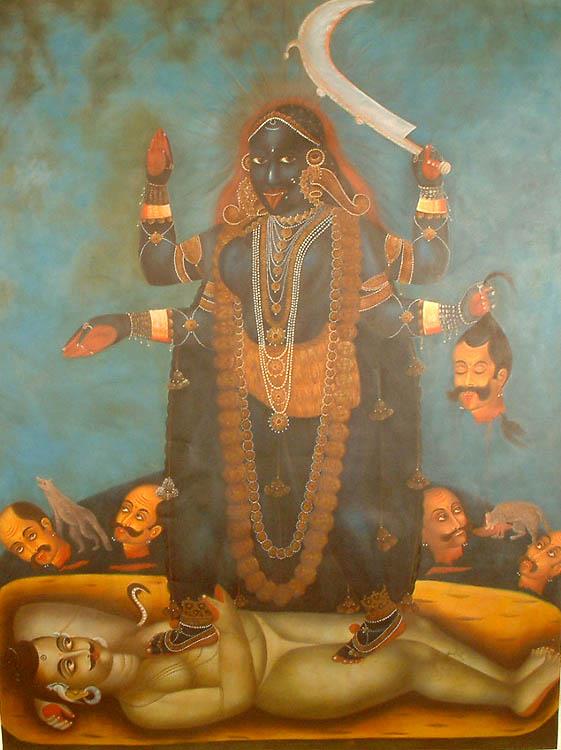
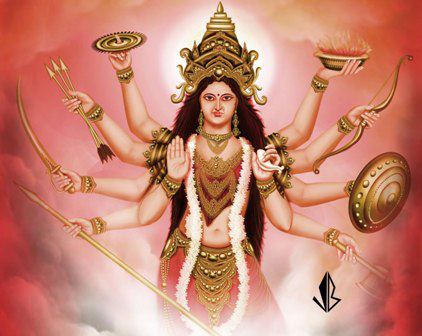
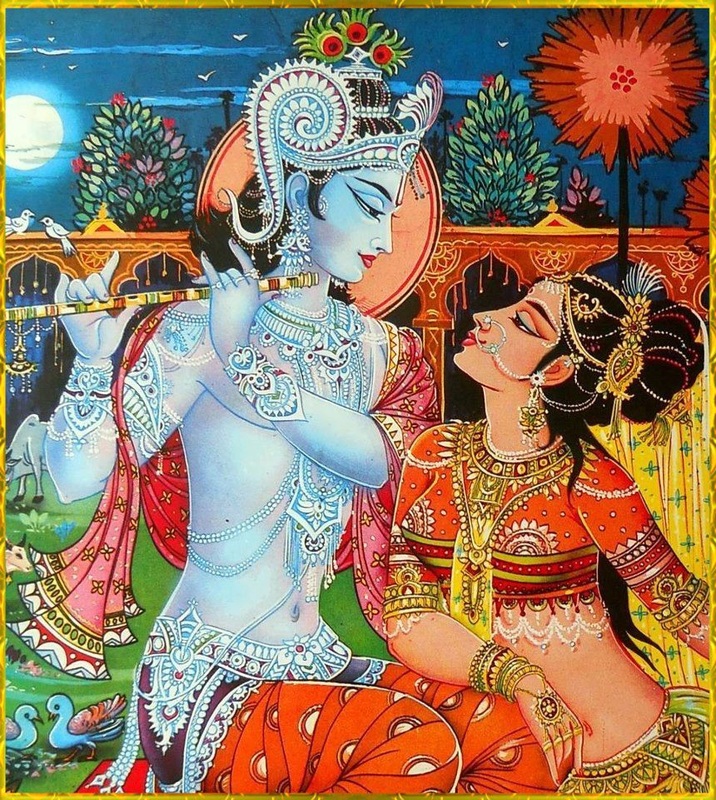
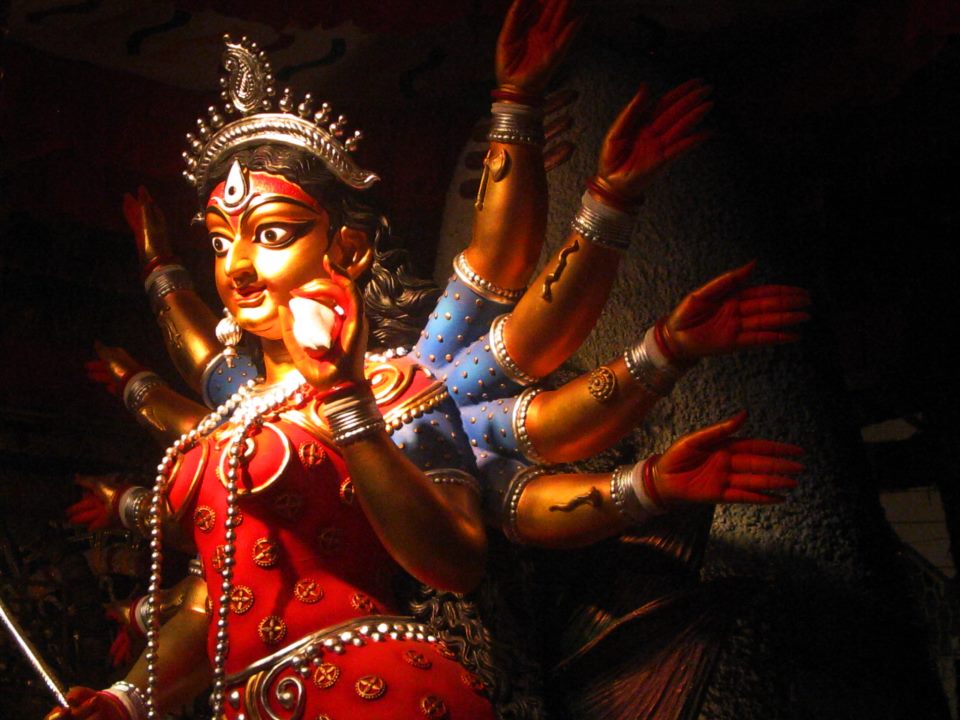
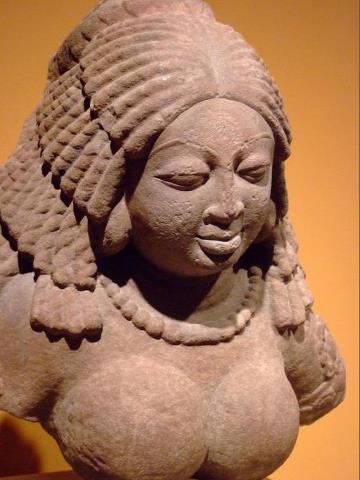
 RSS Feed
RSS Feed
